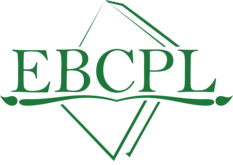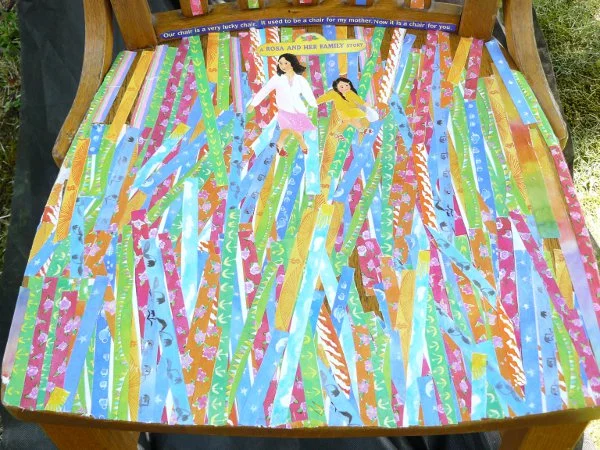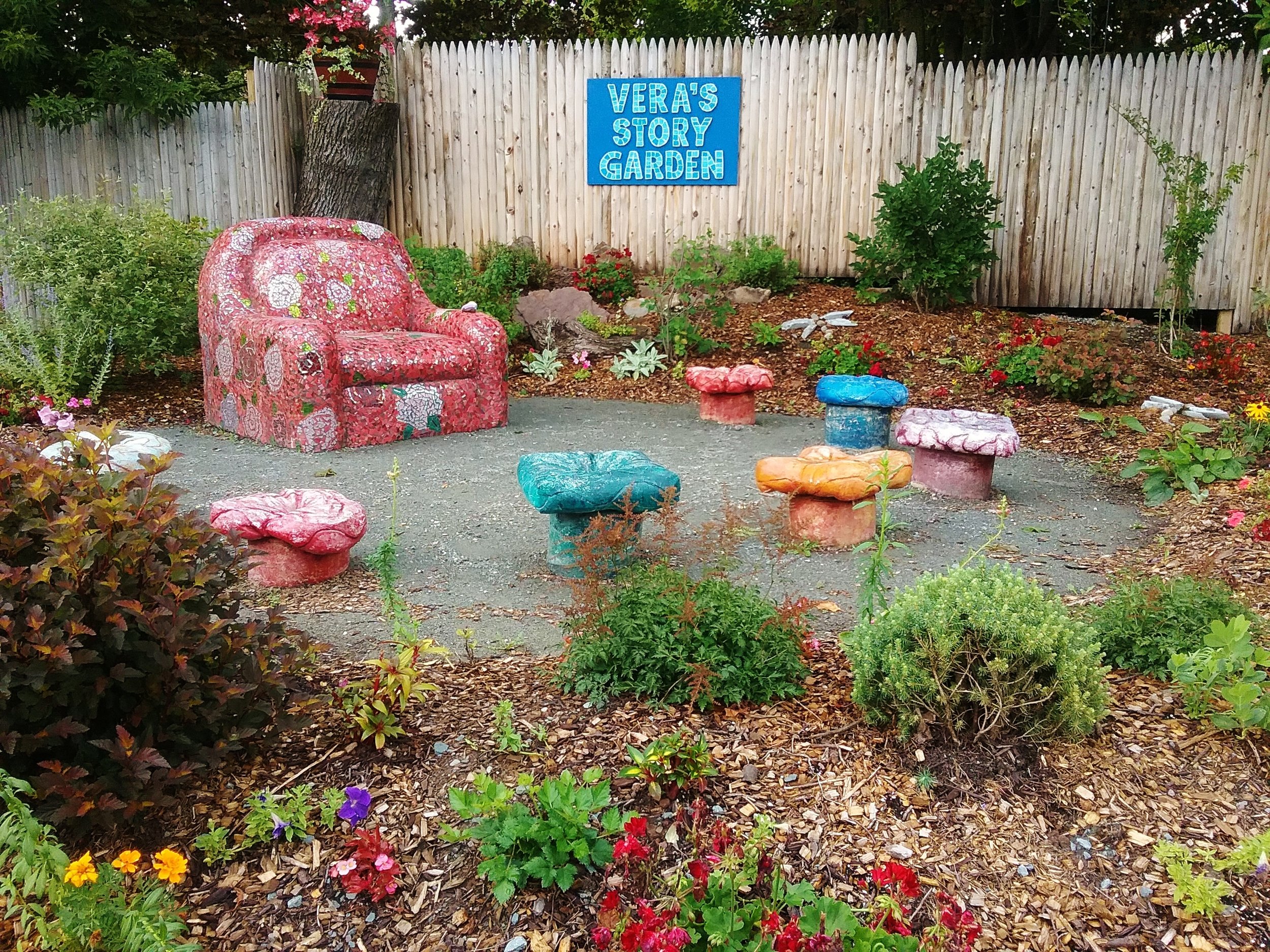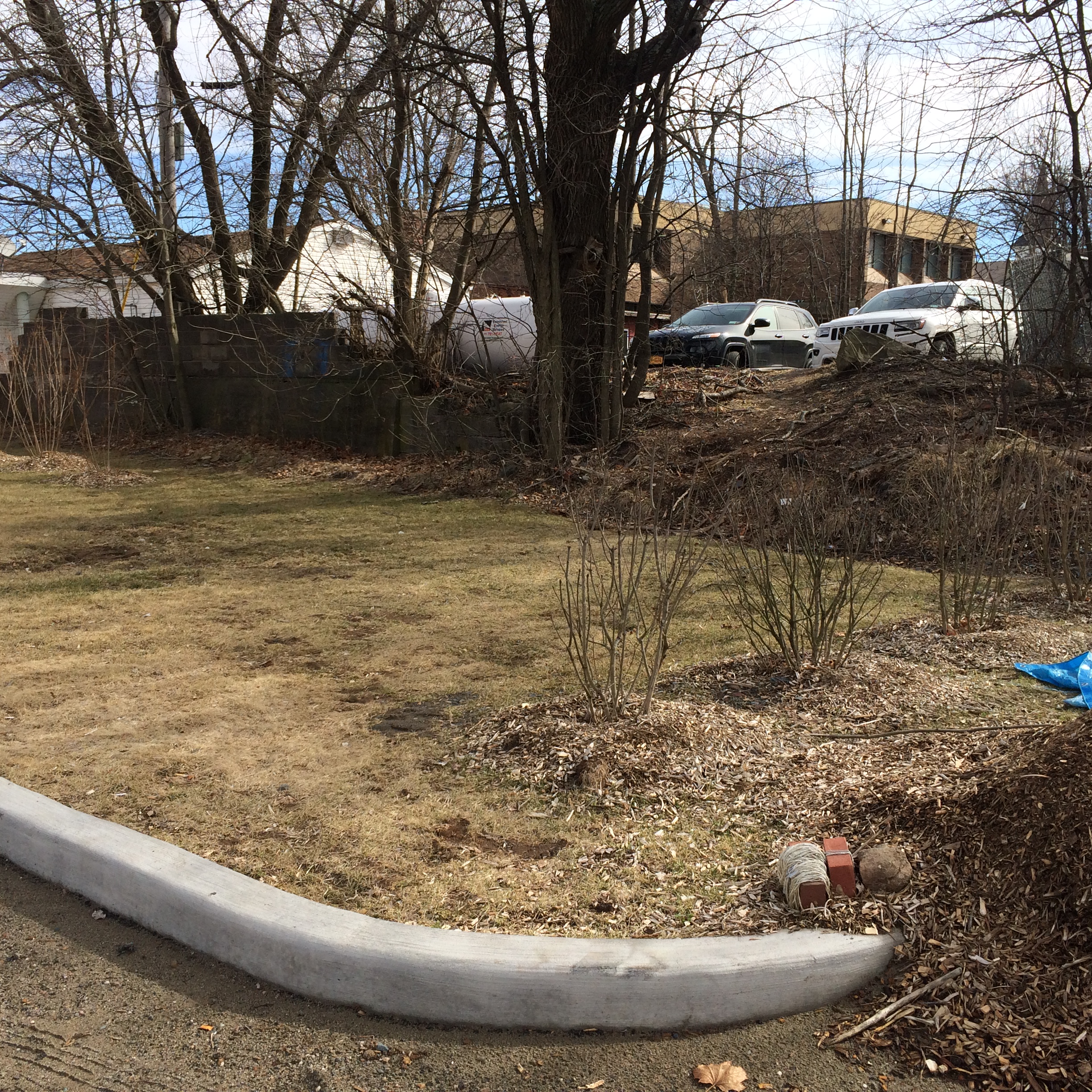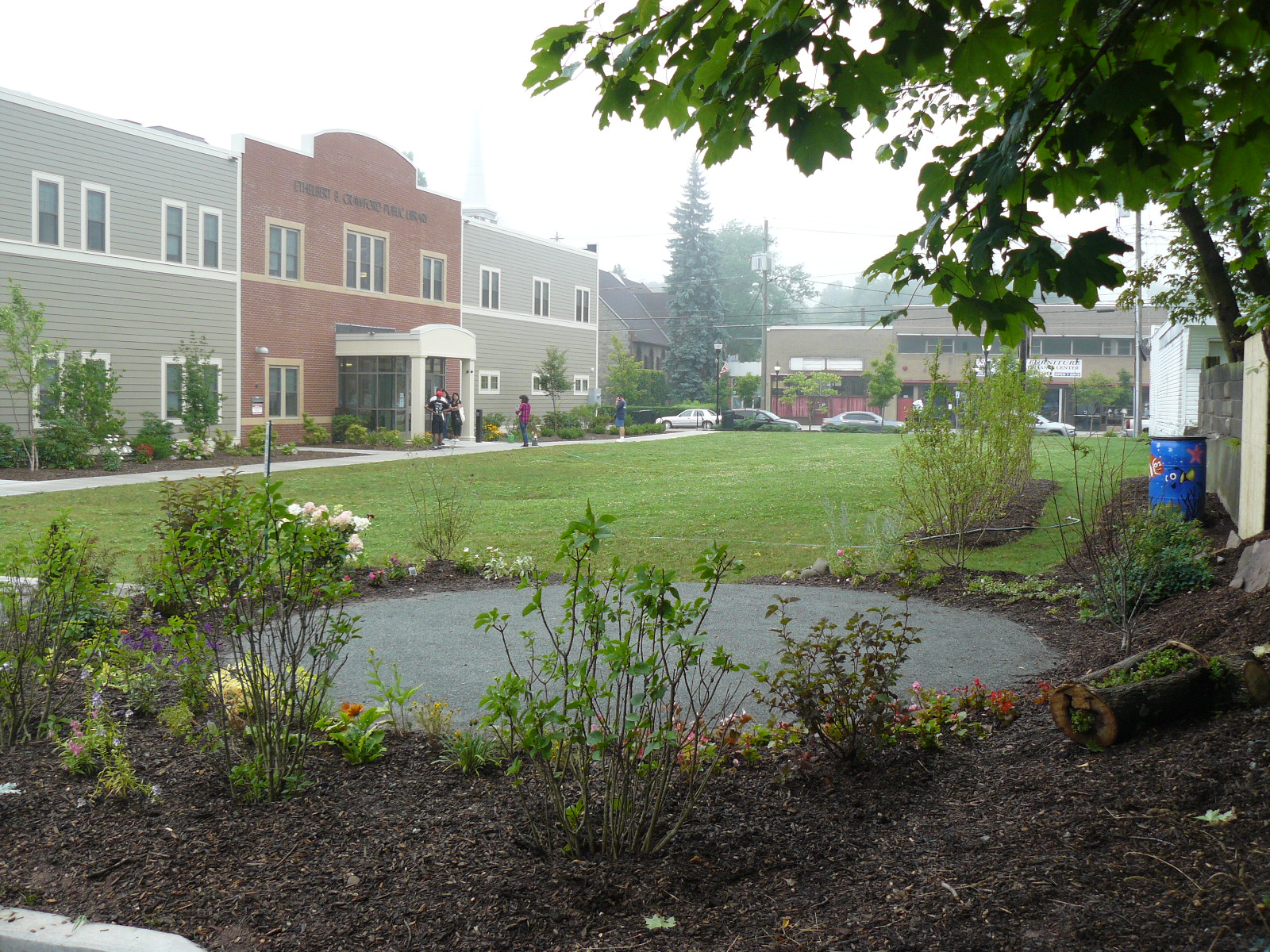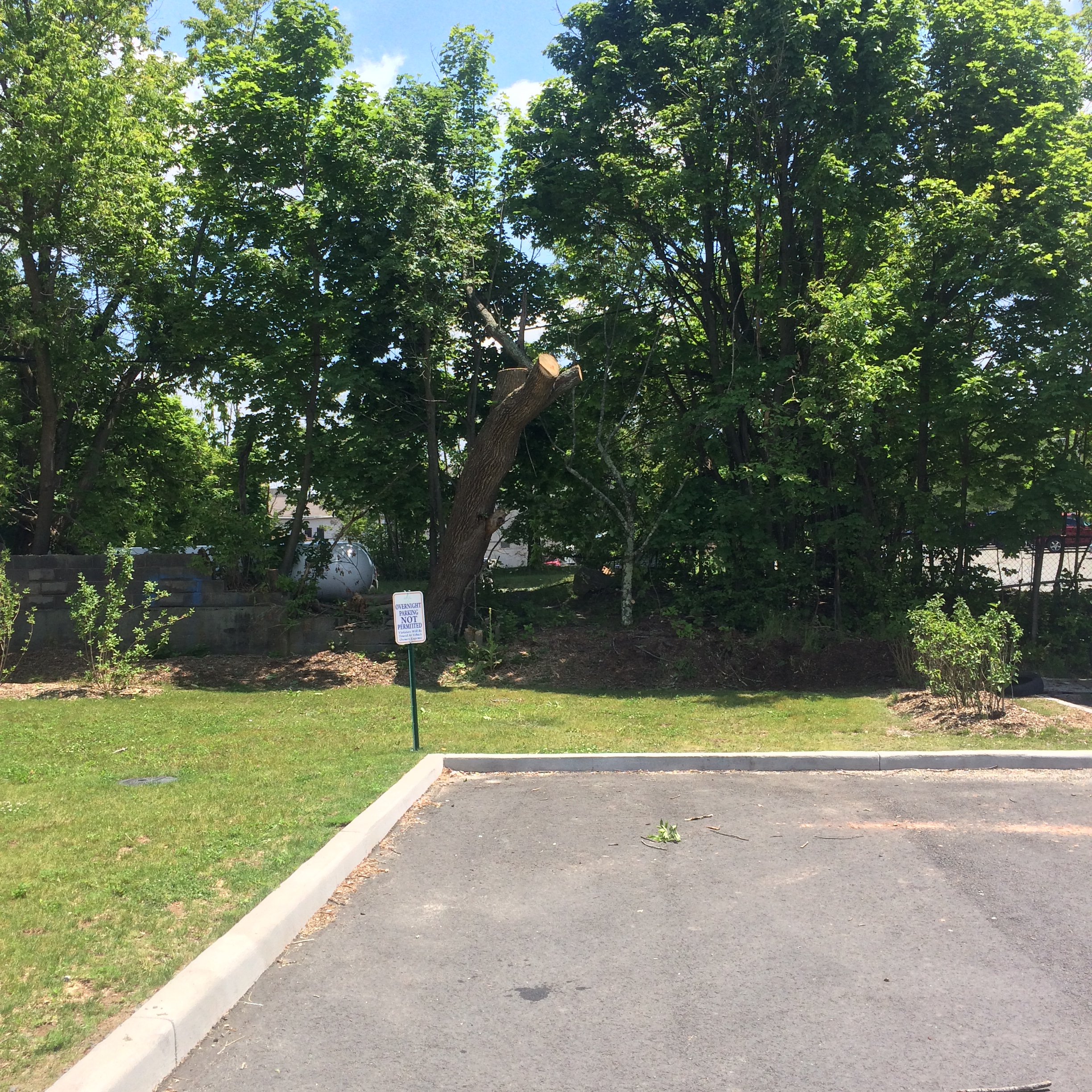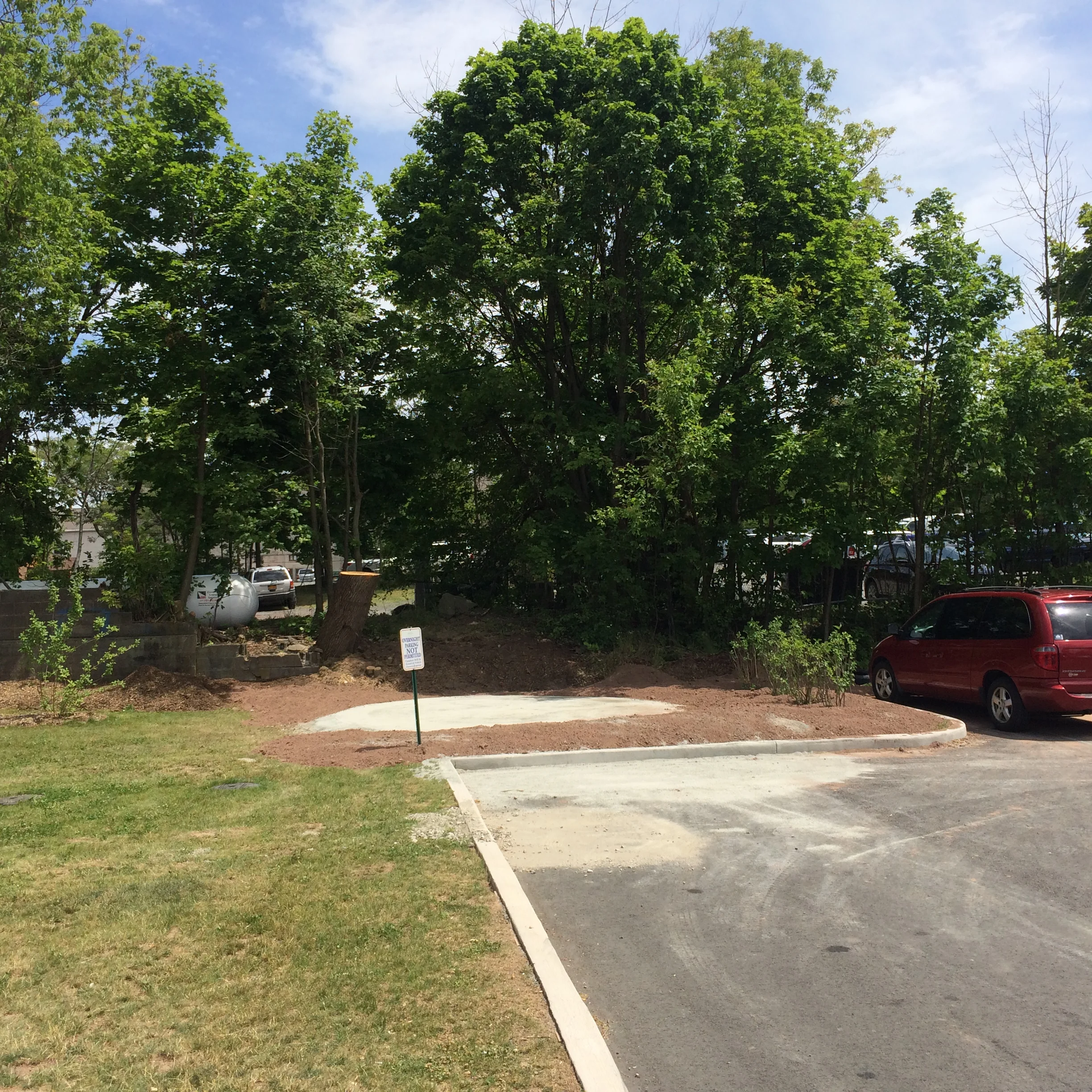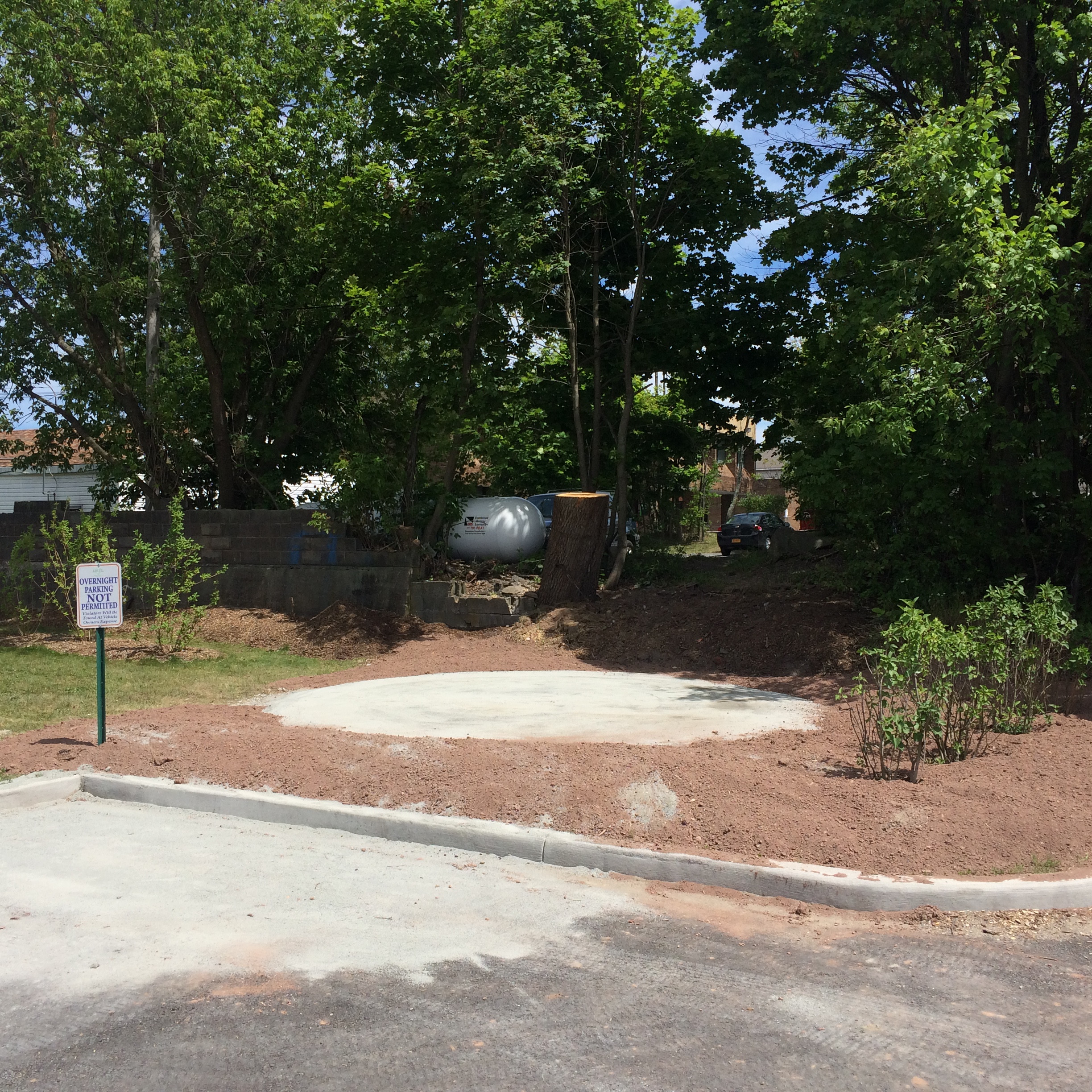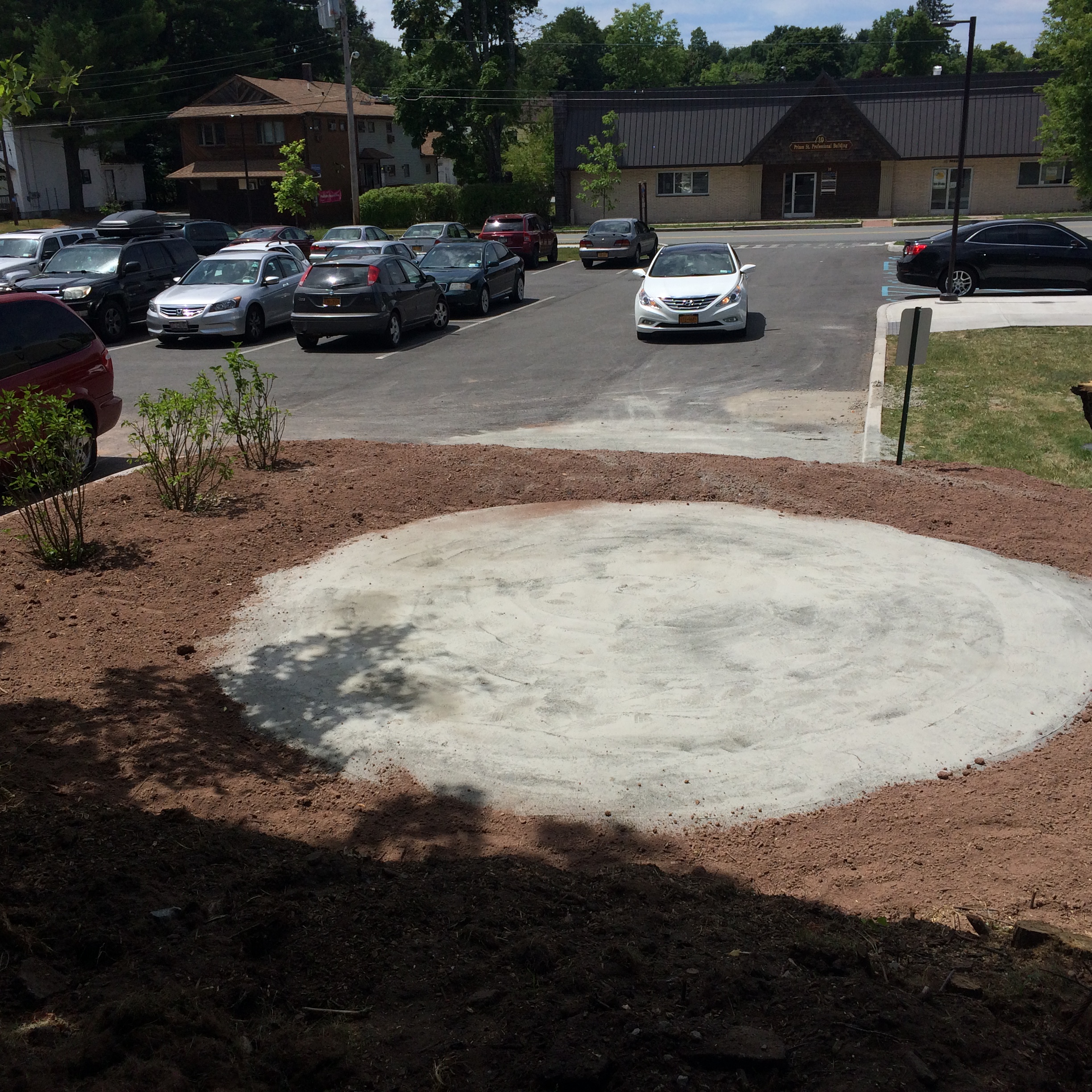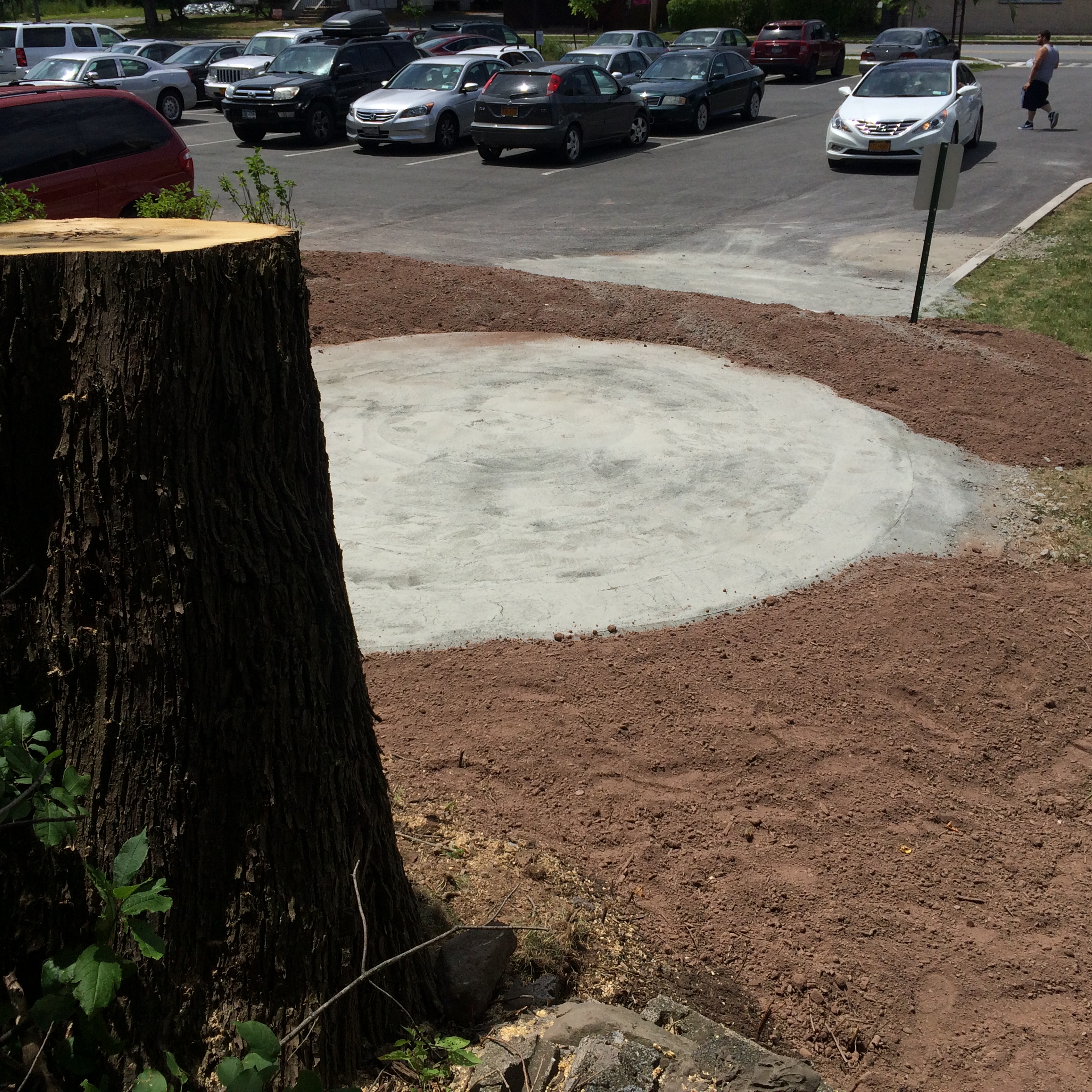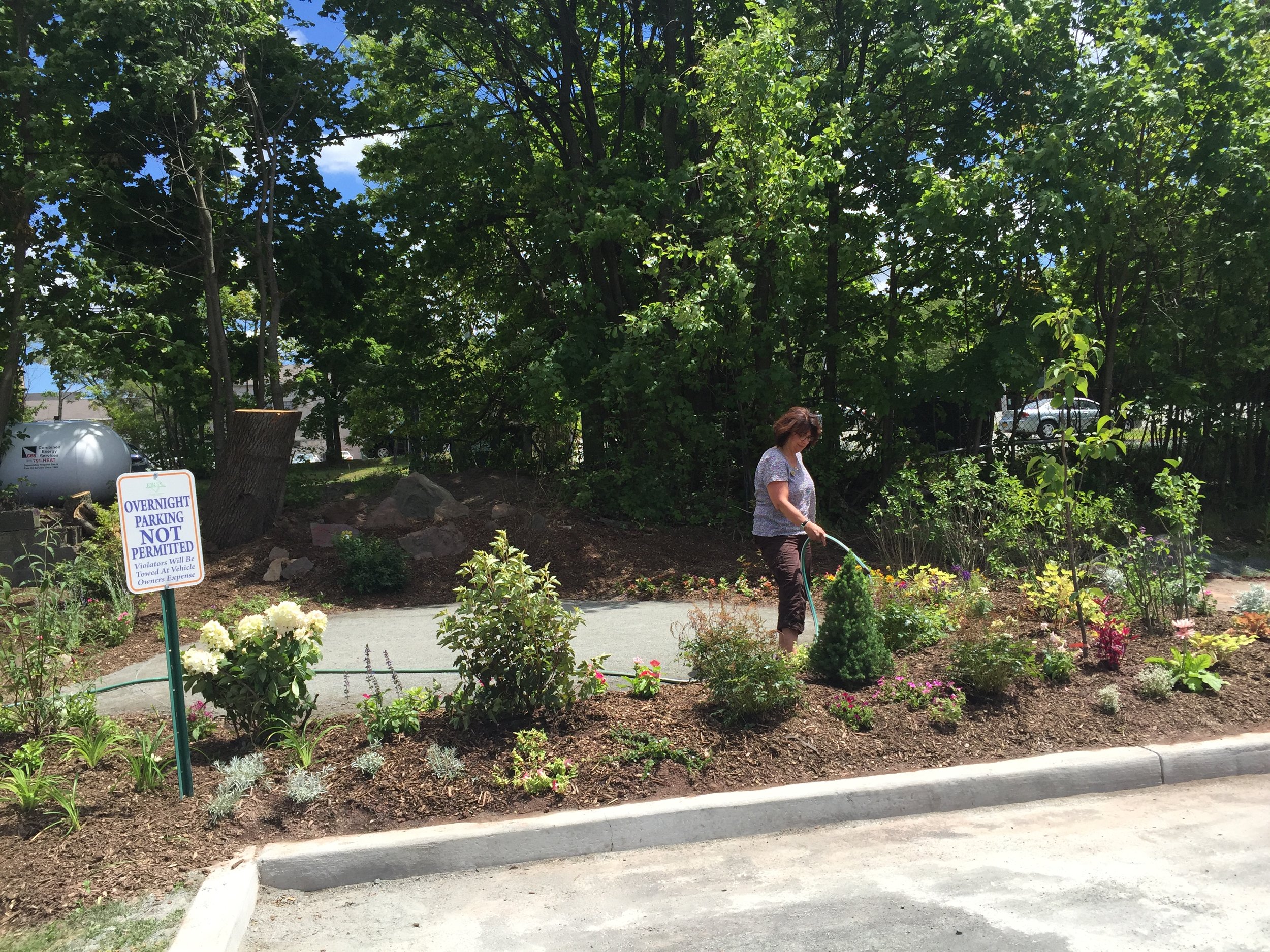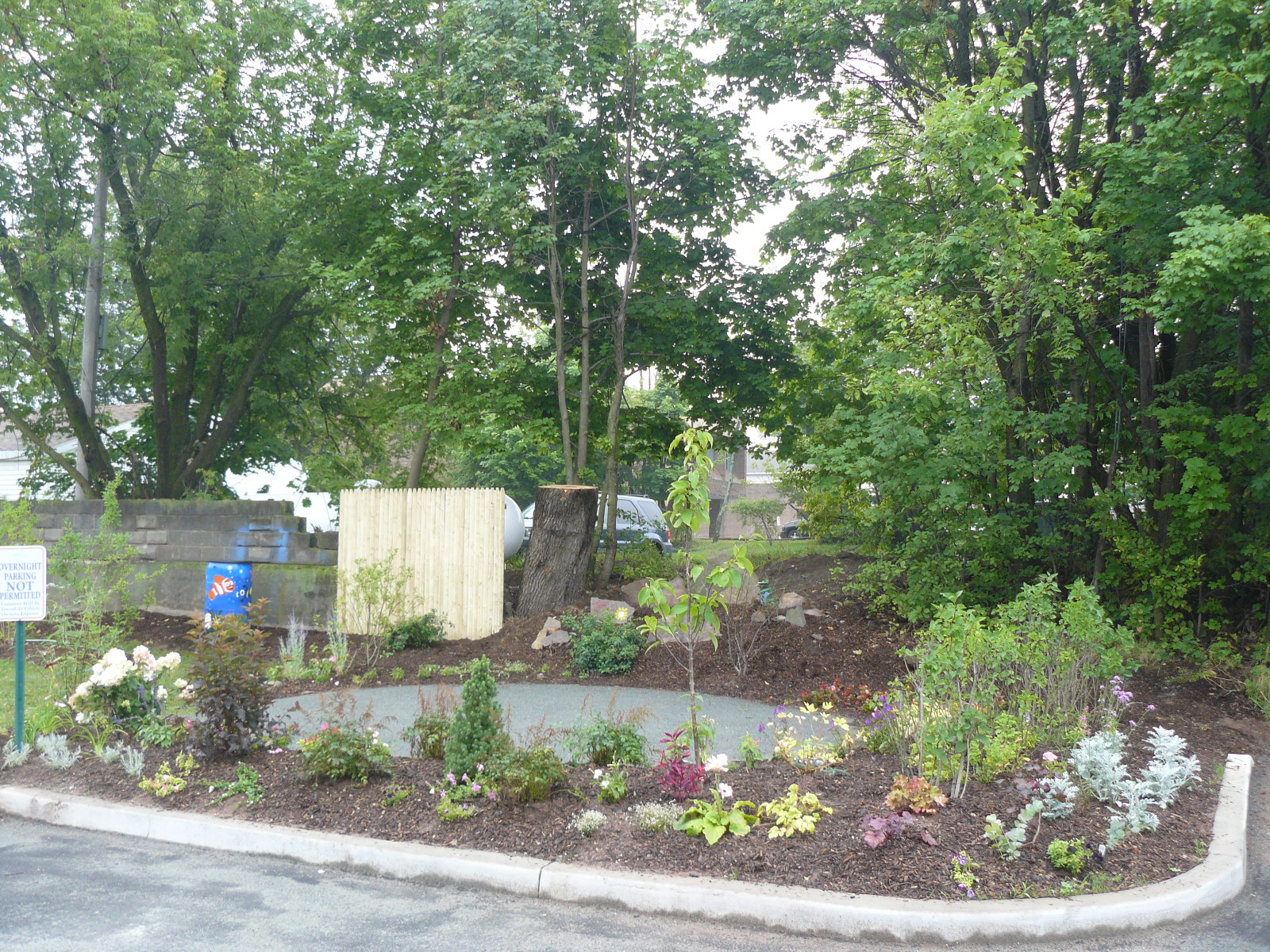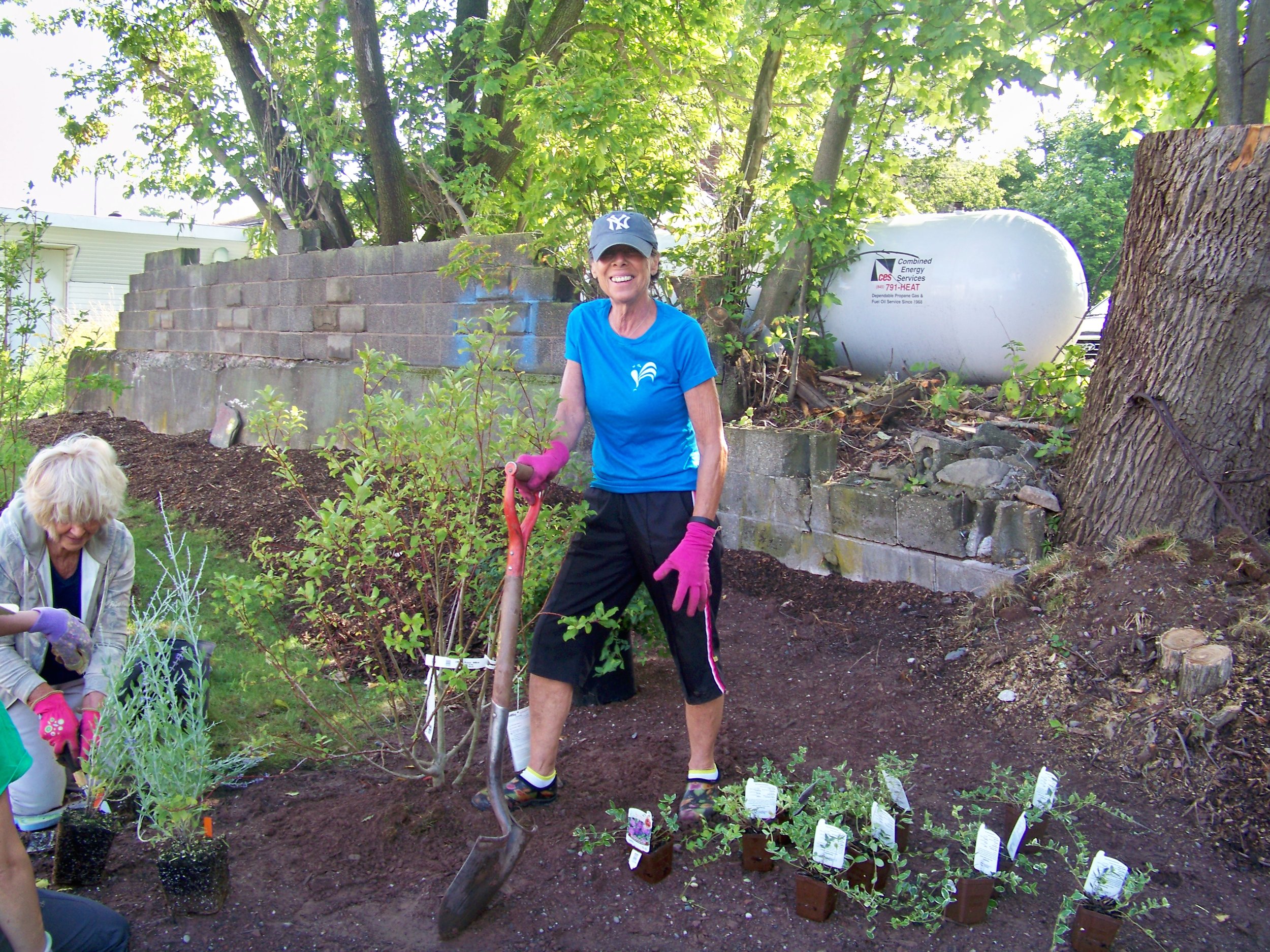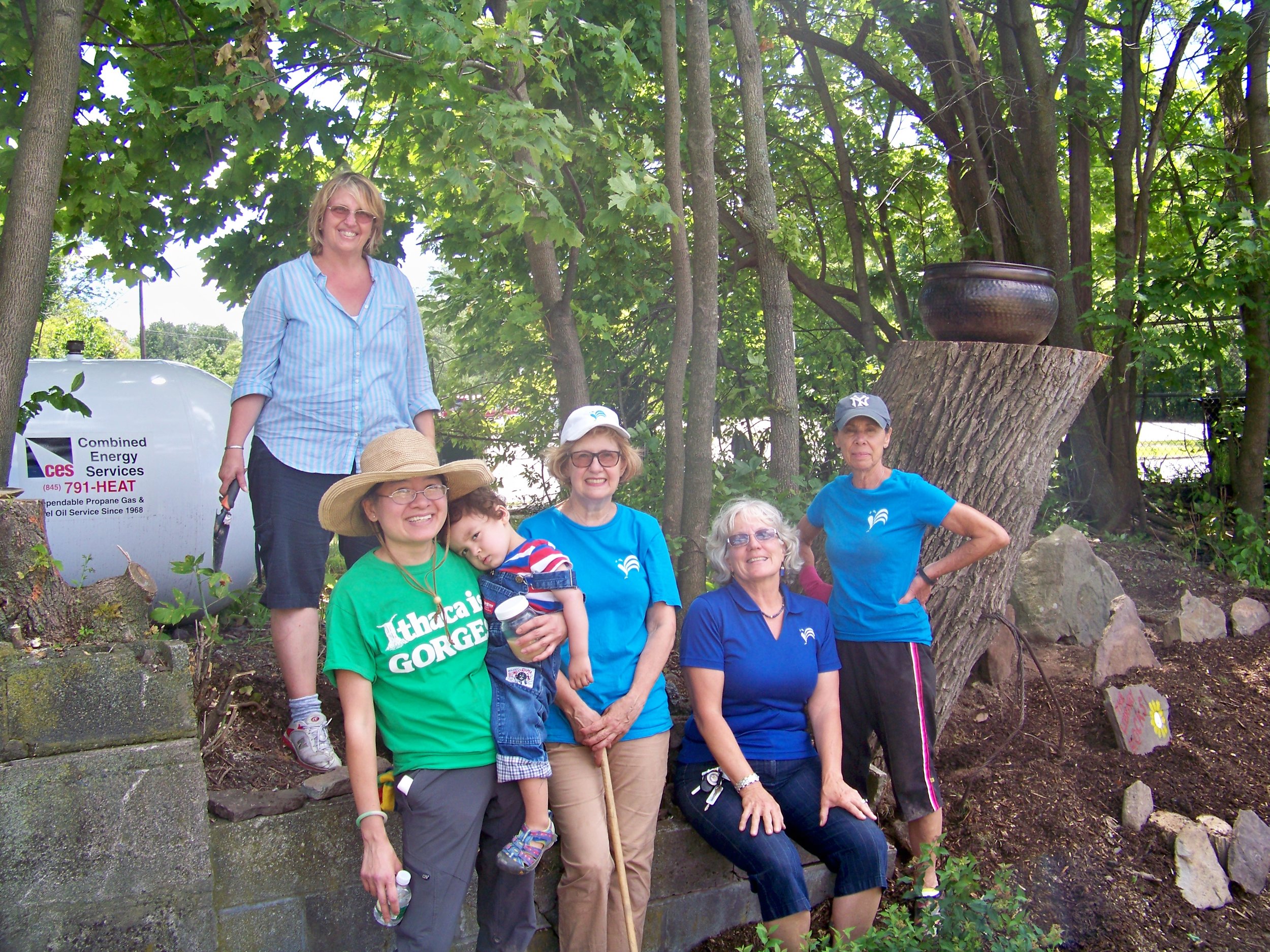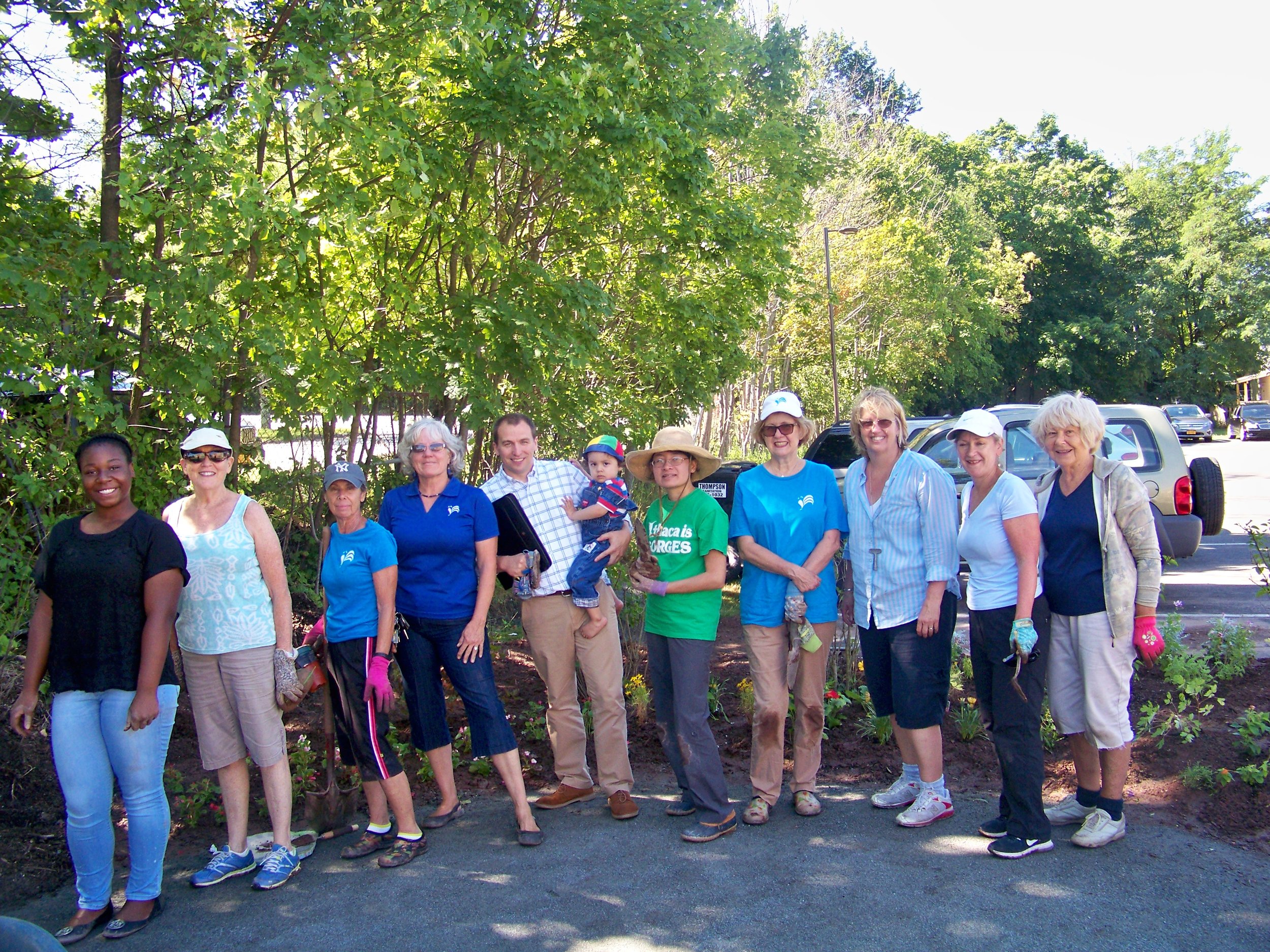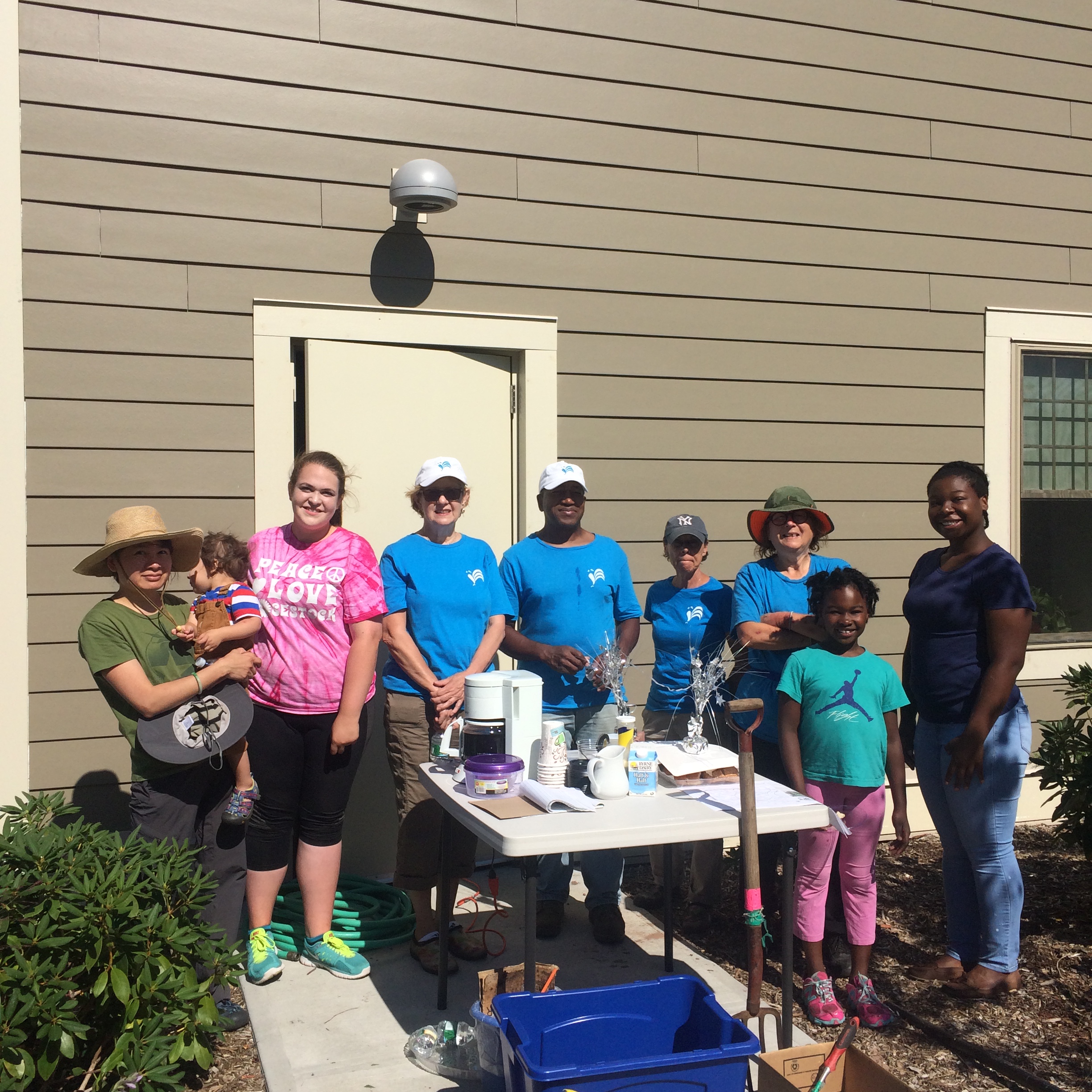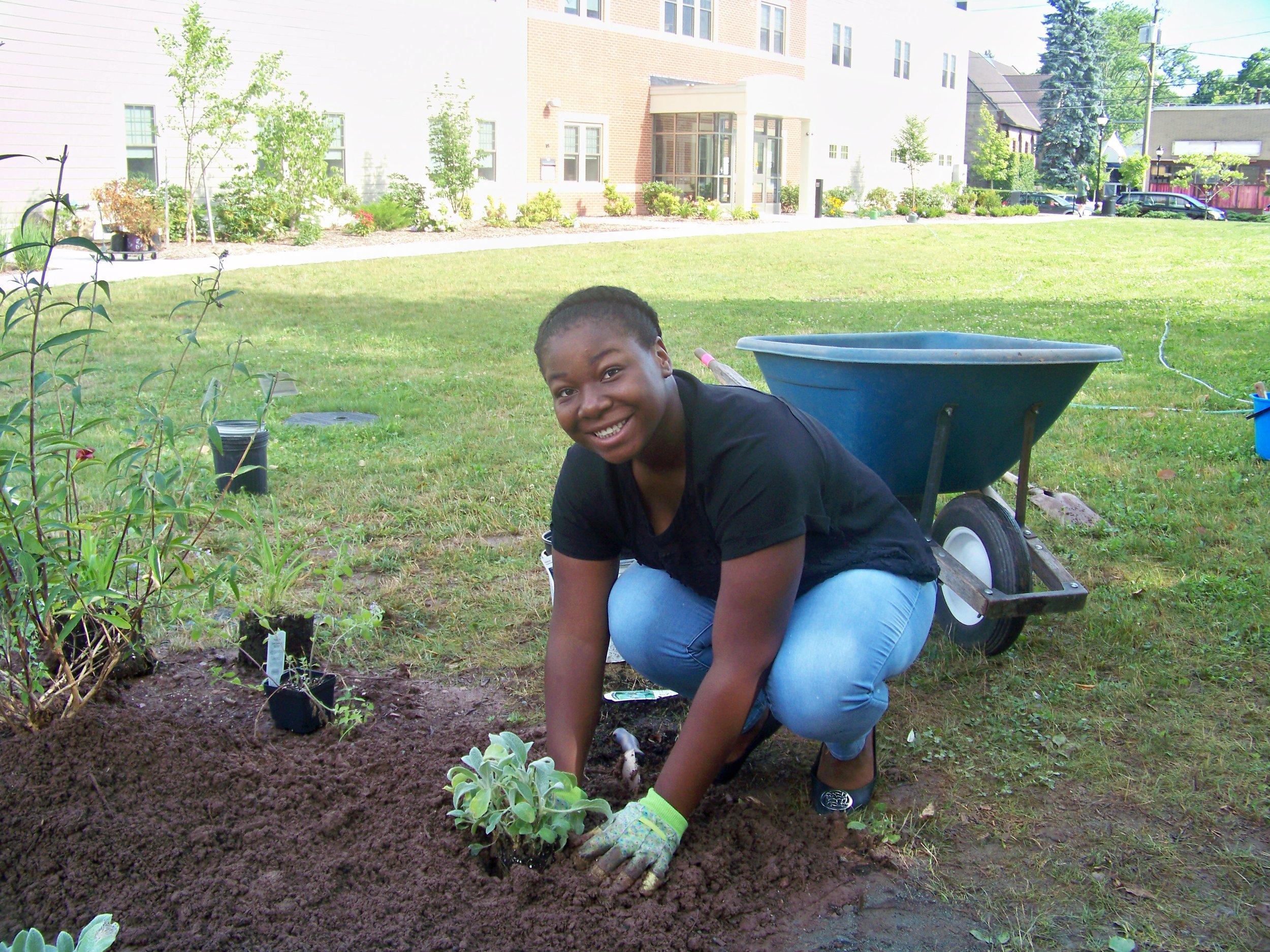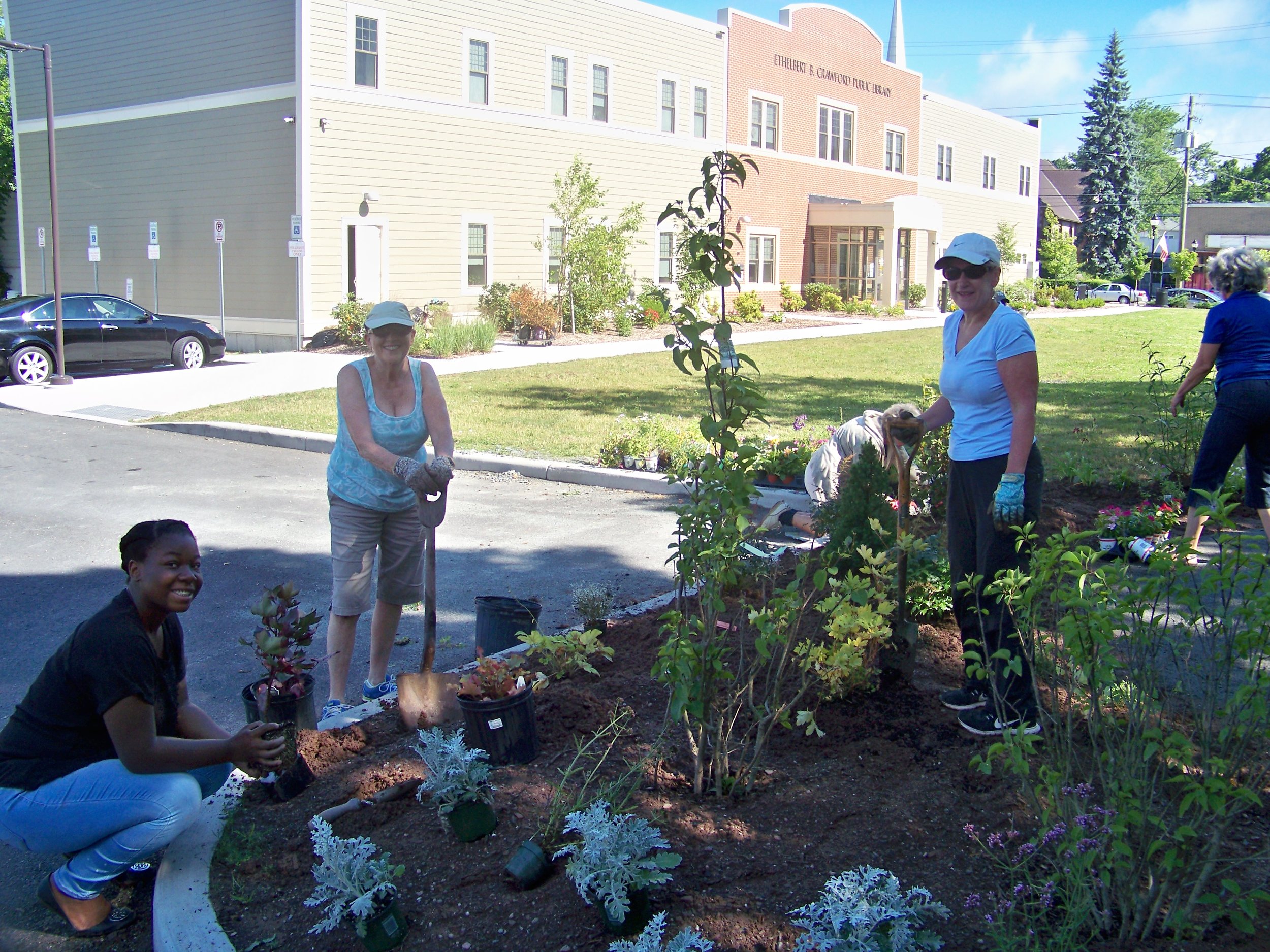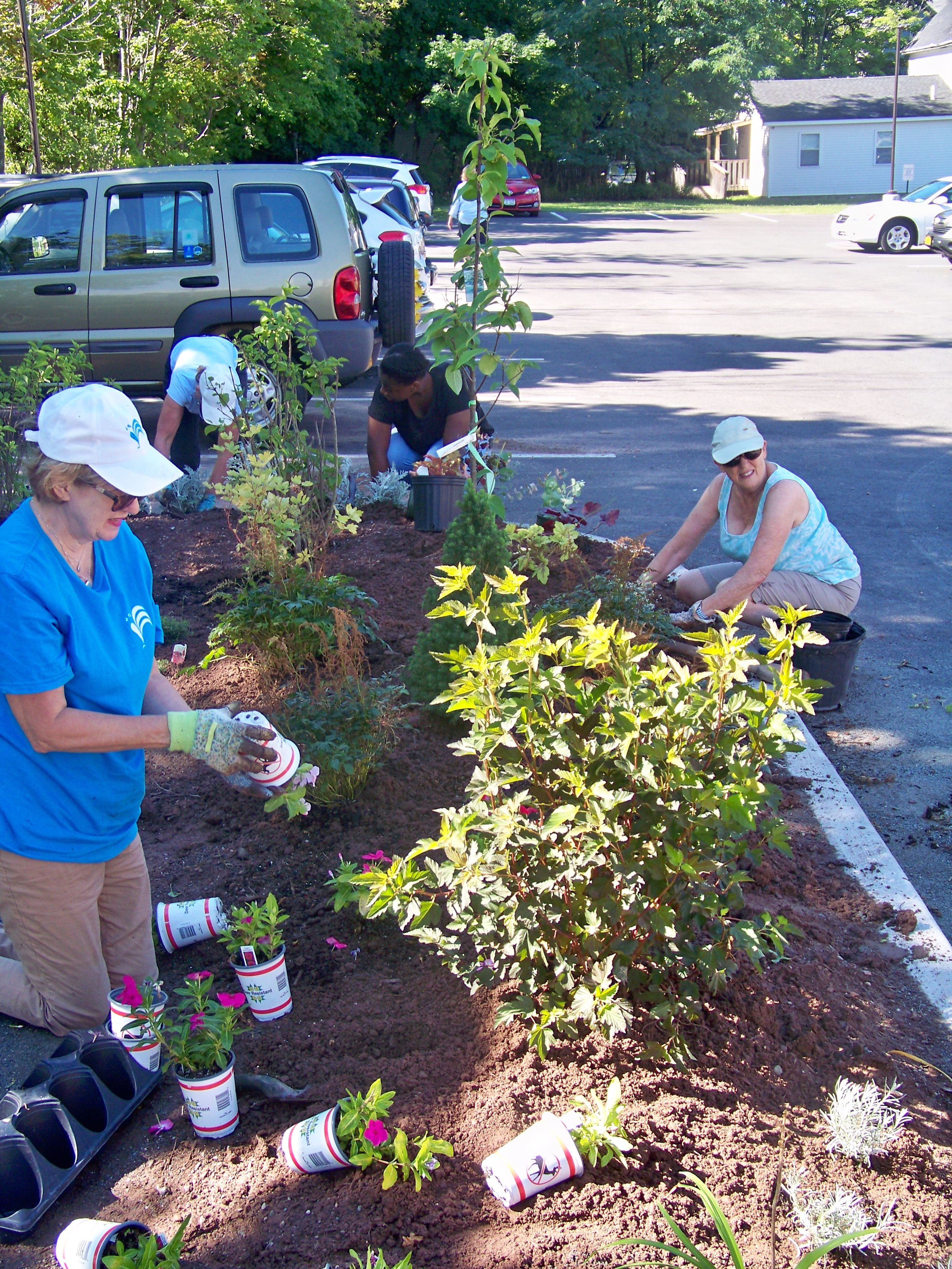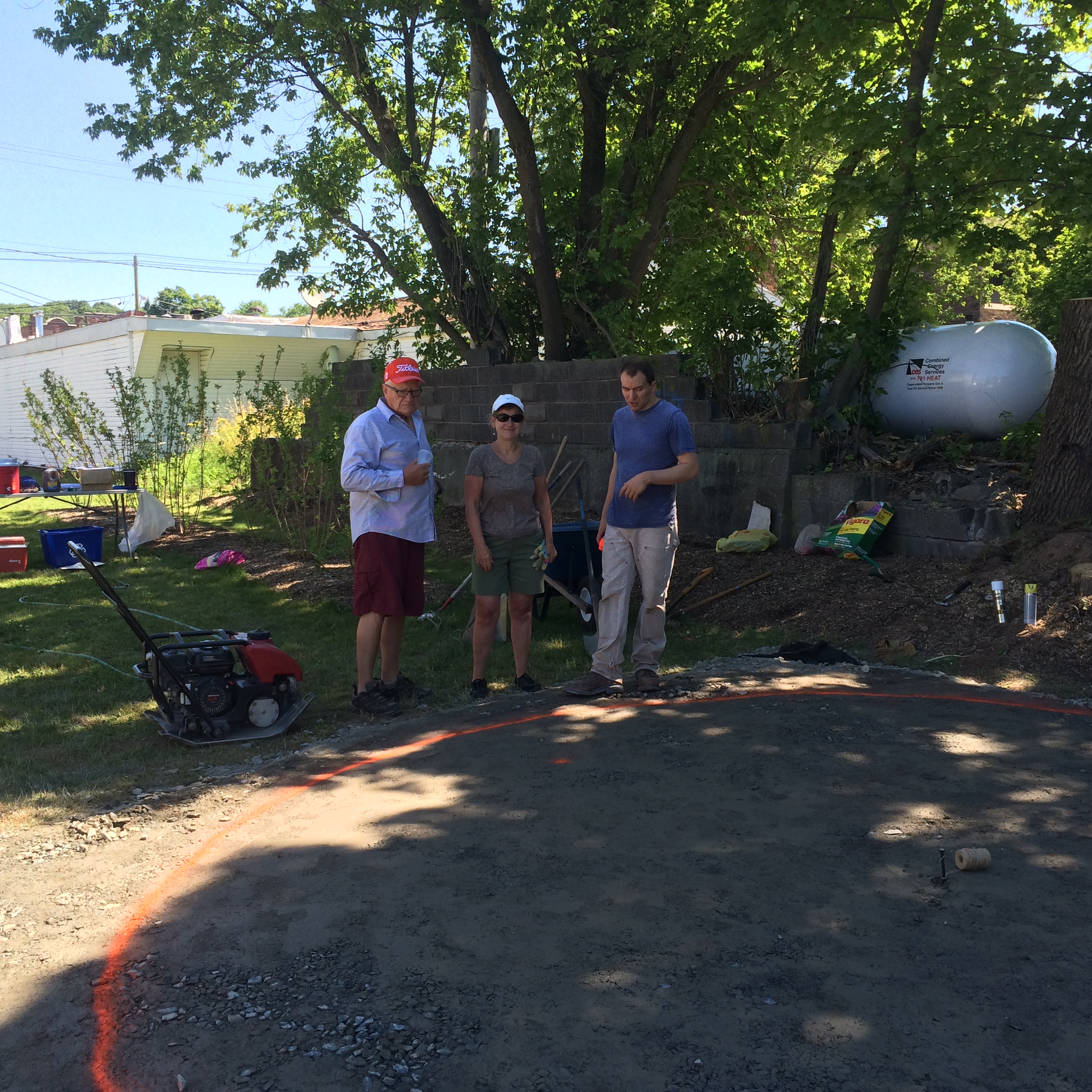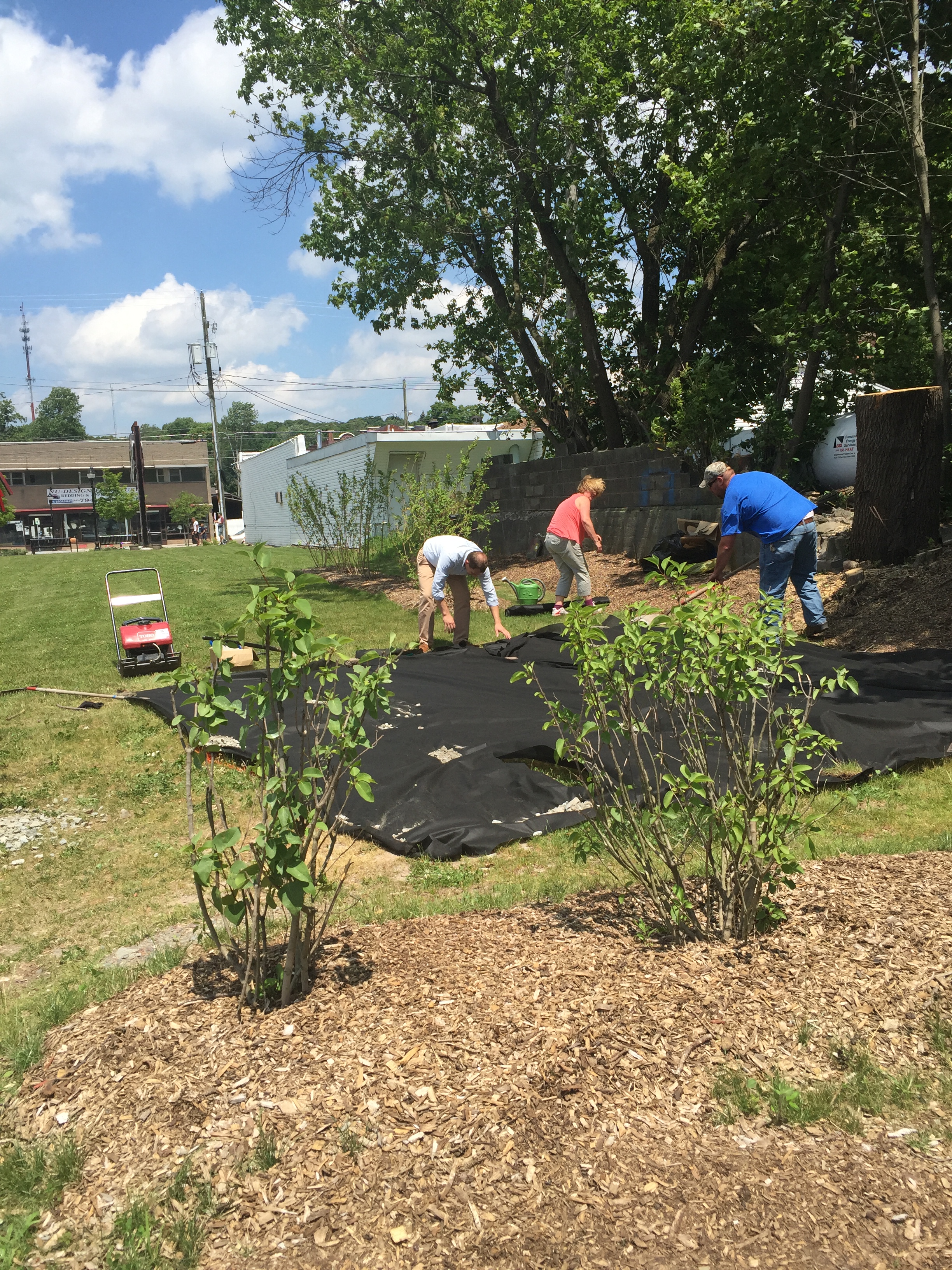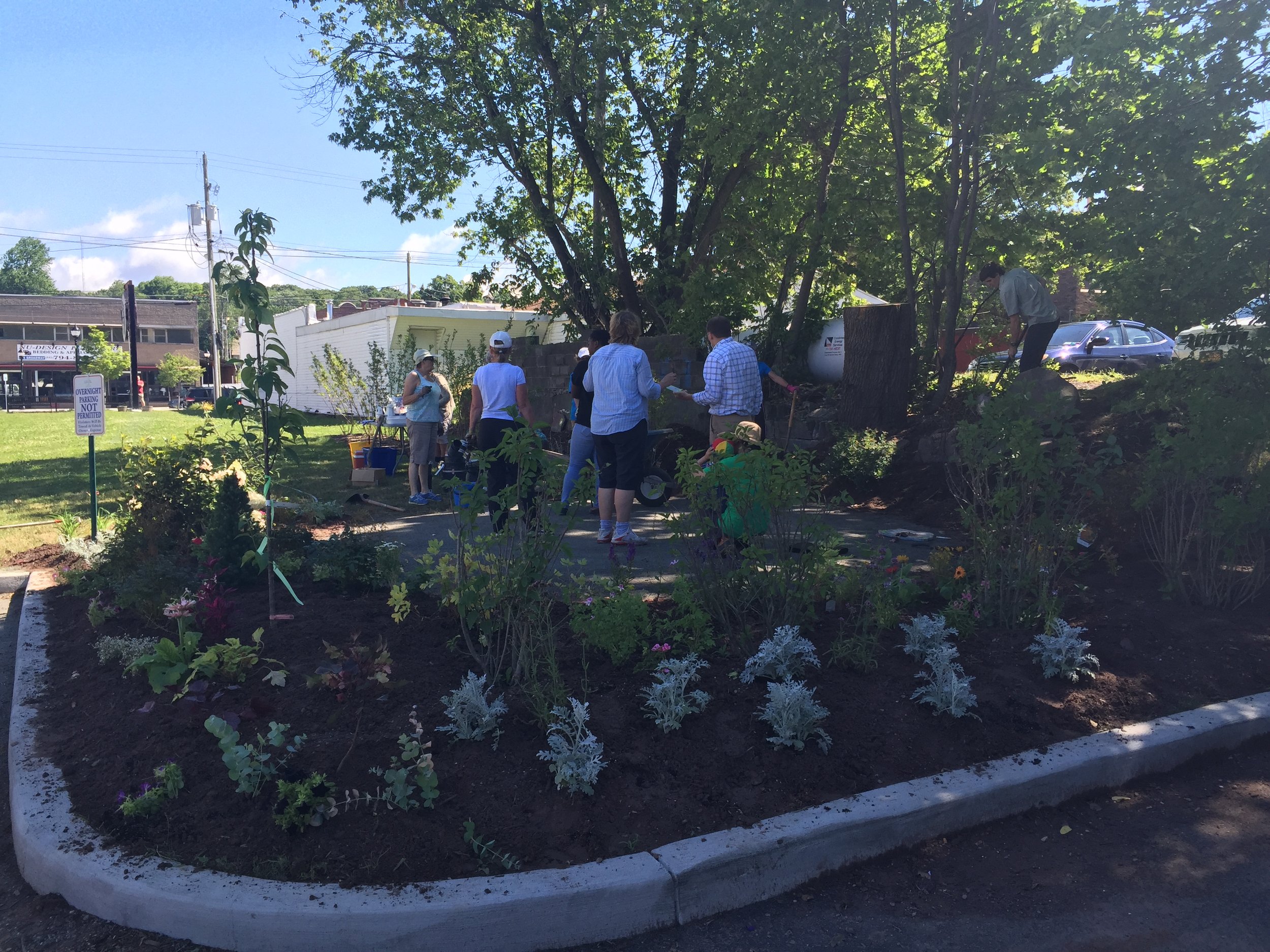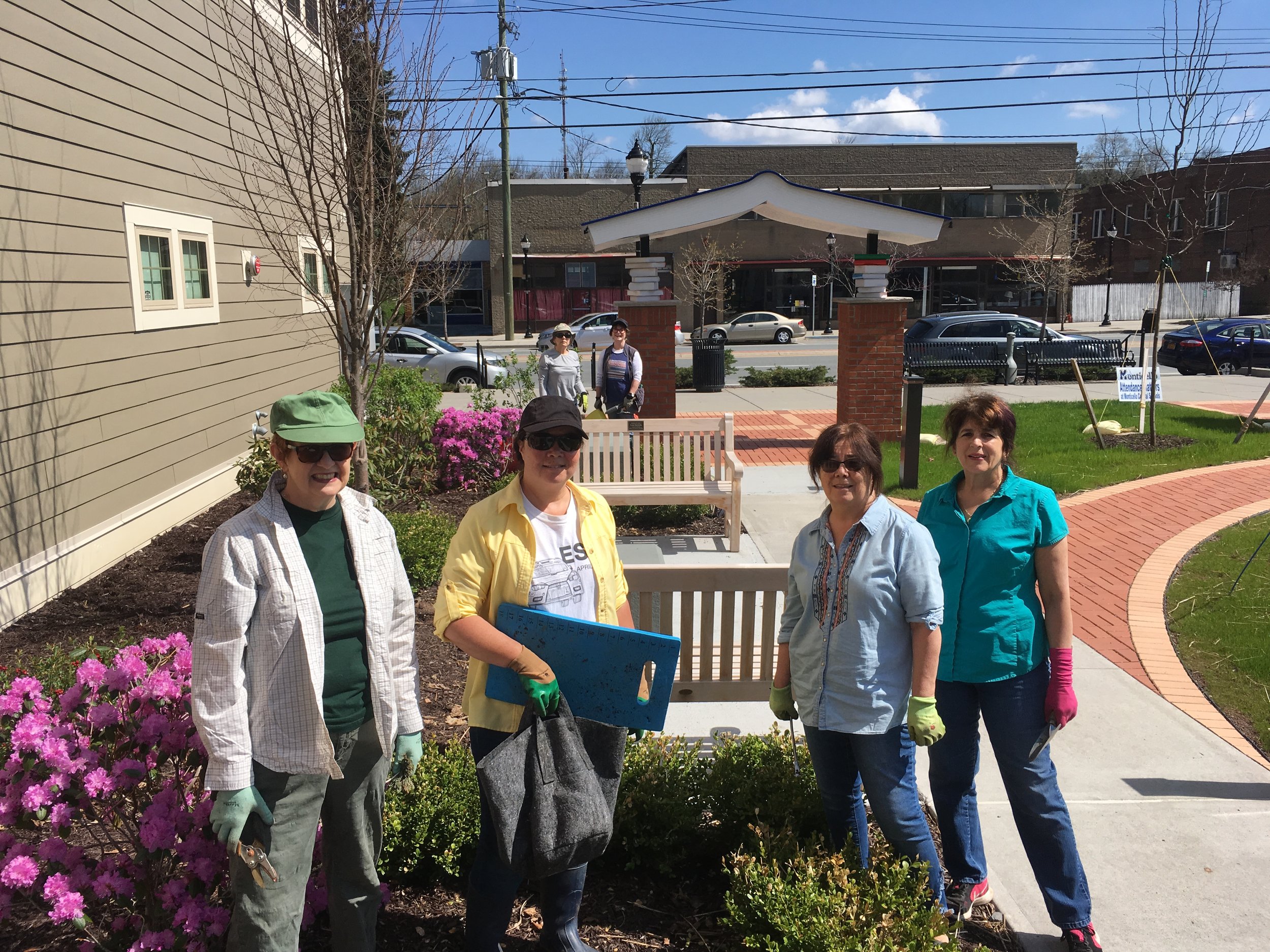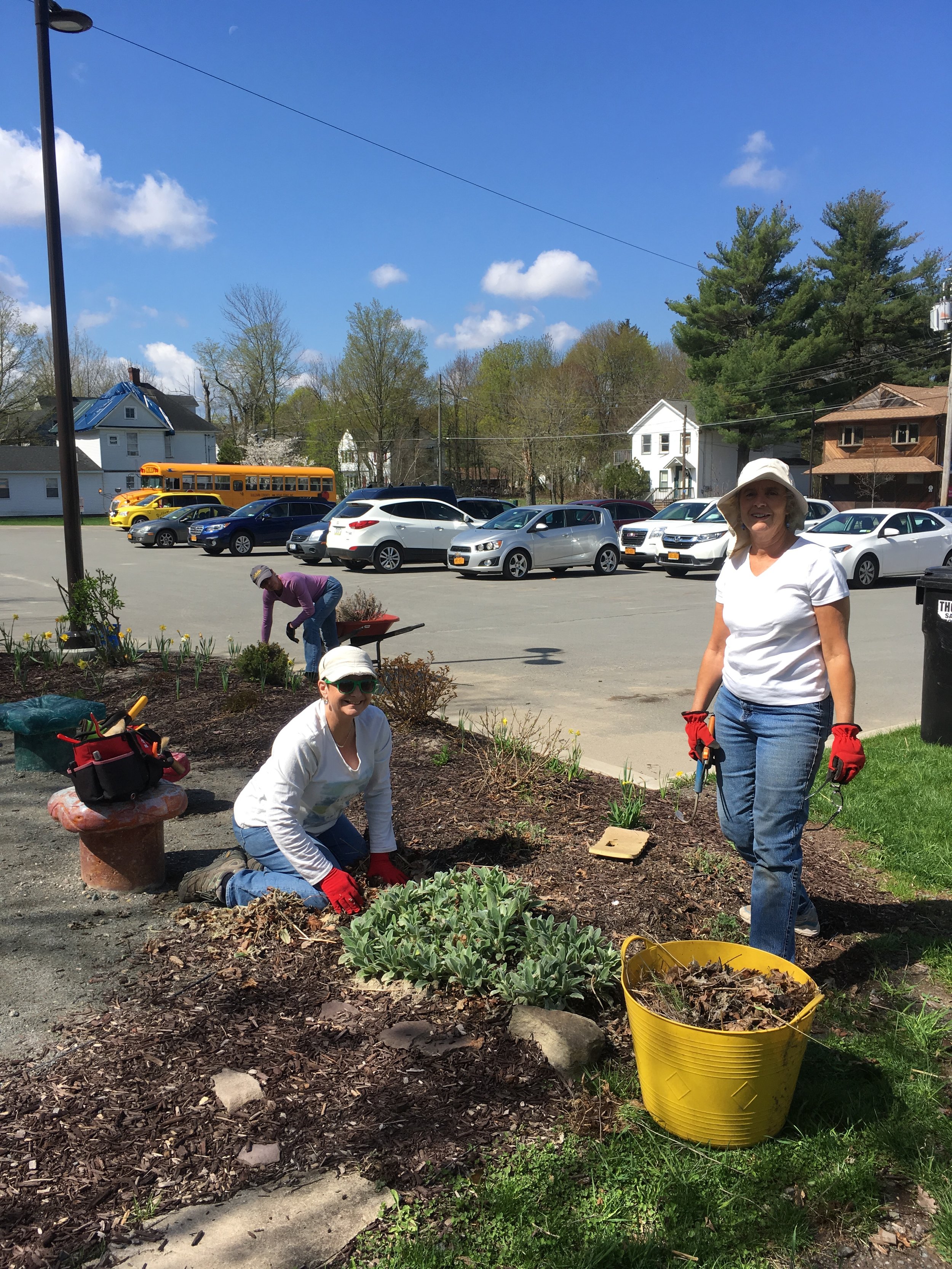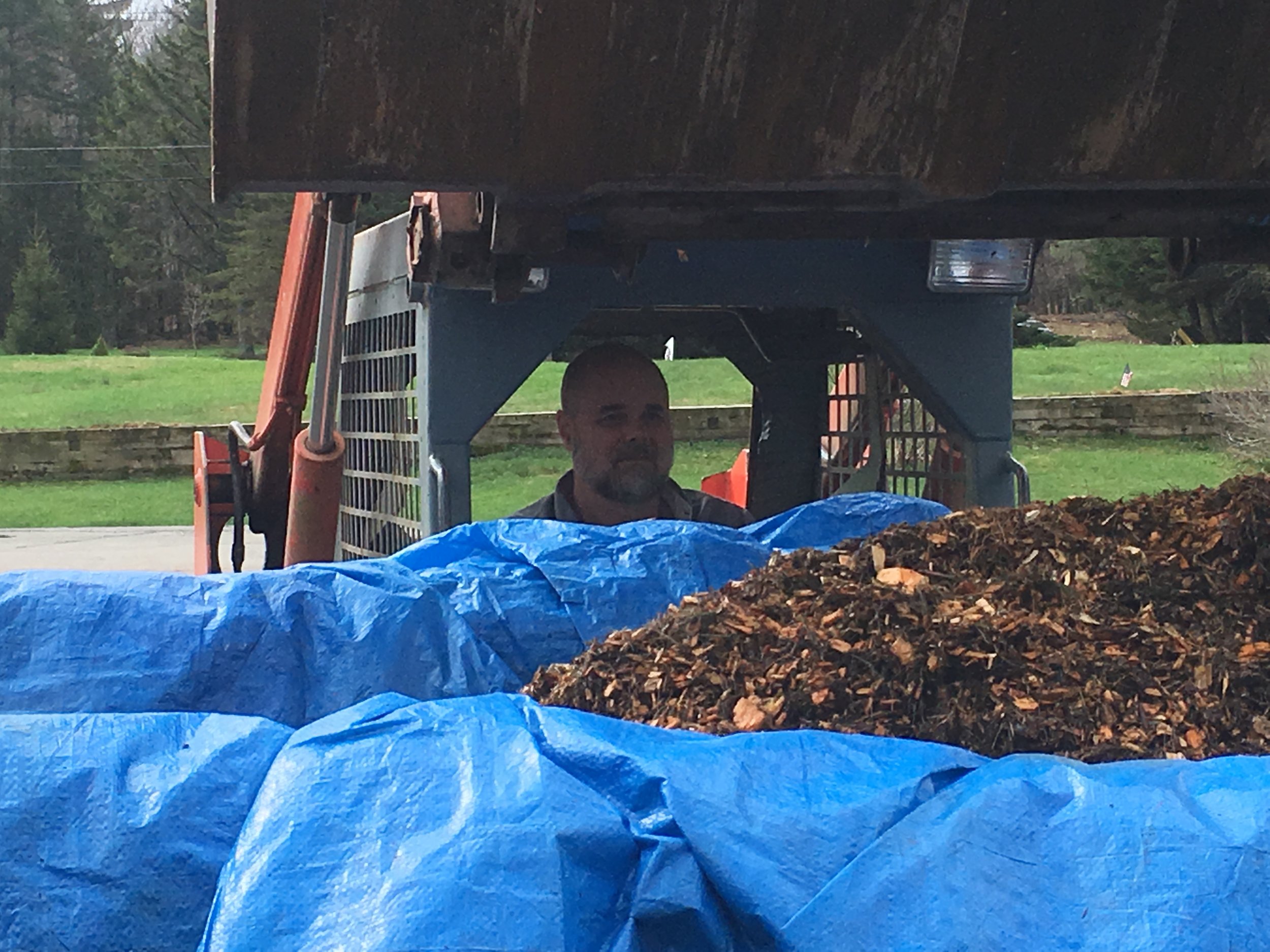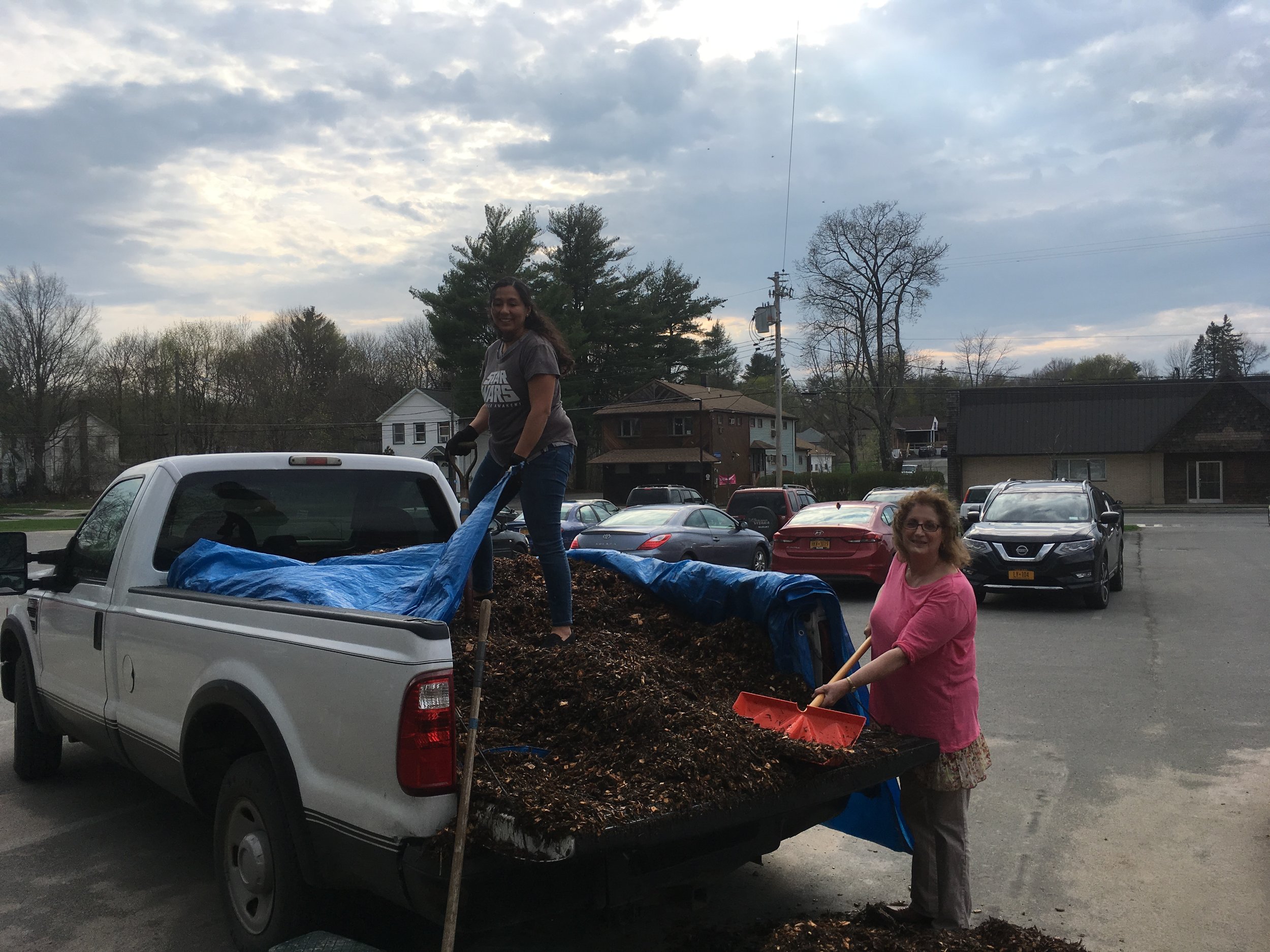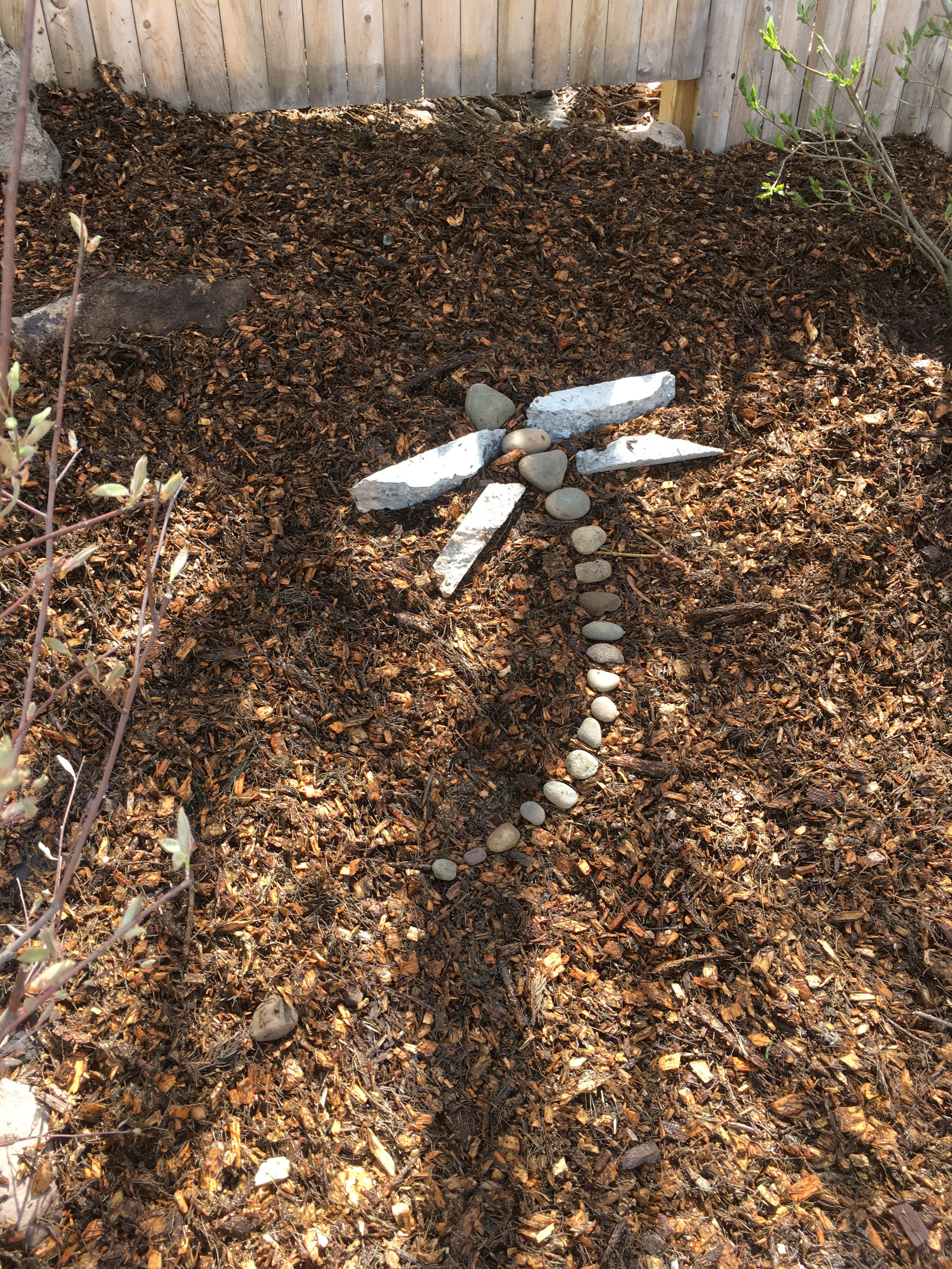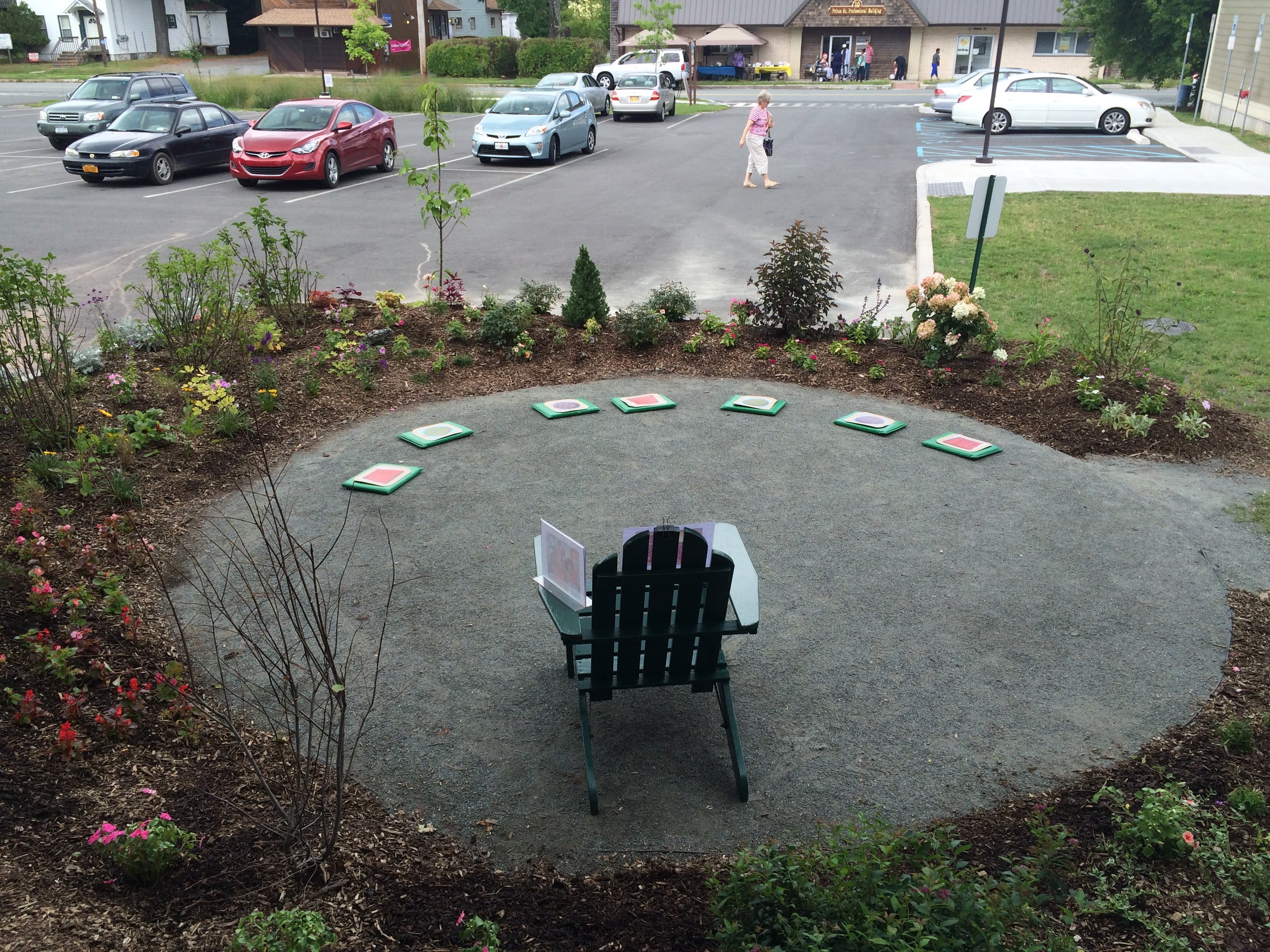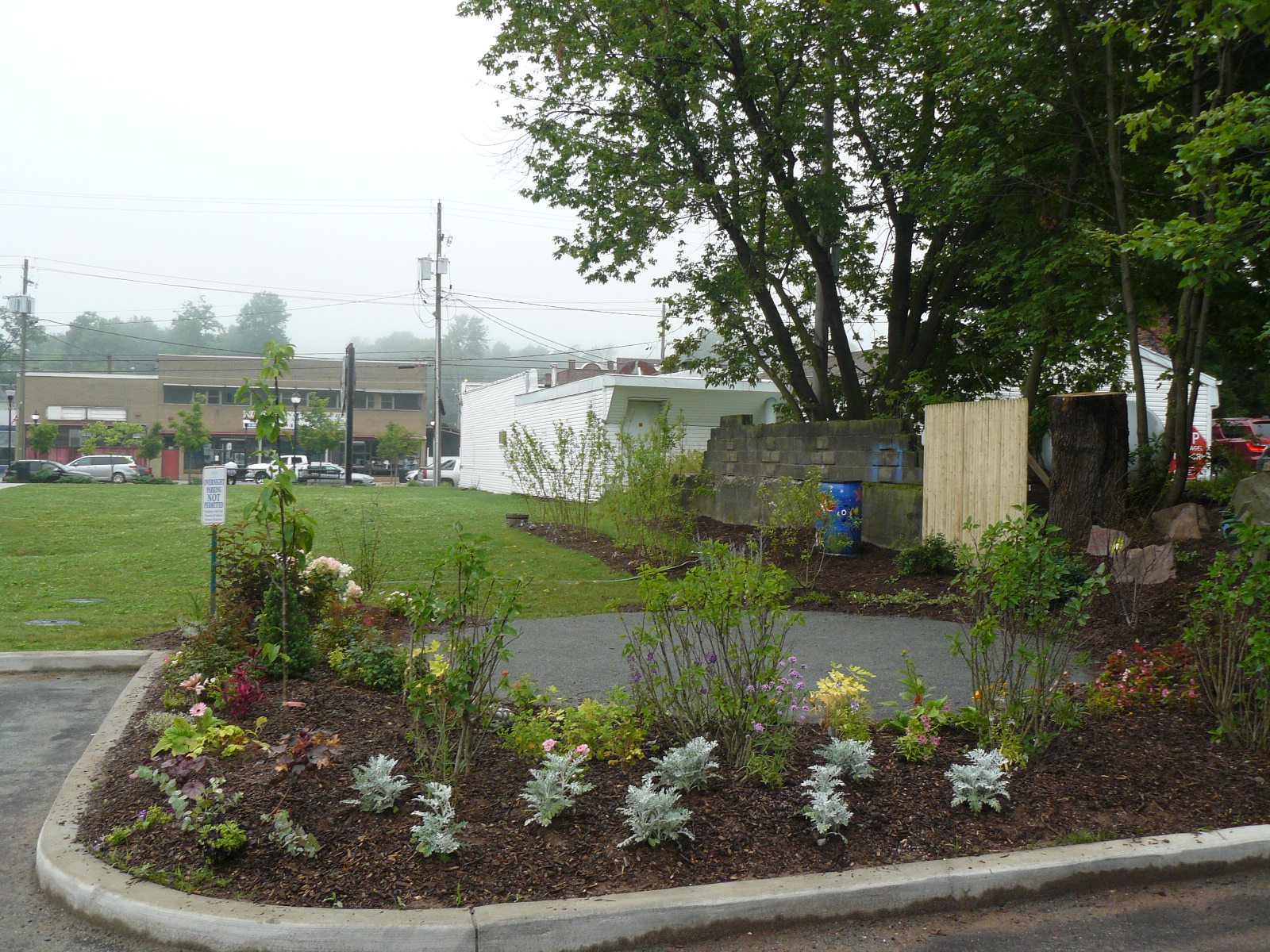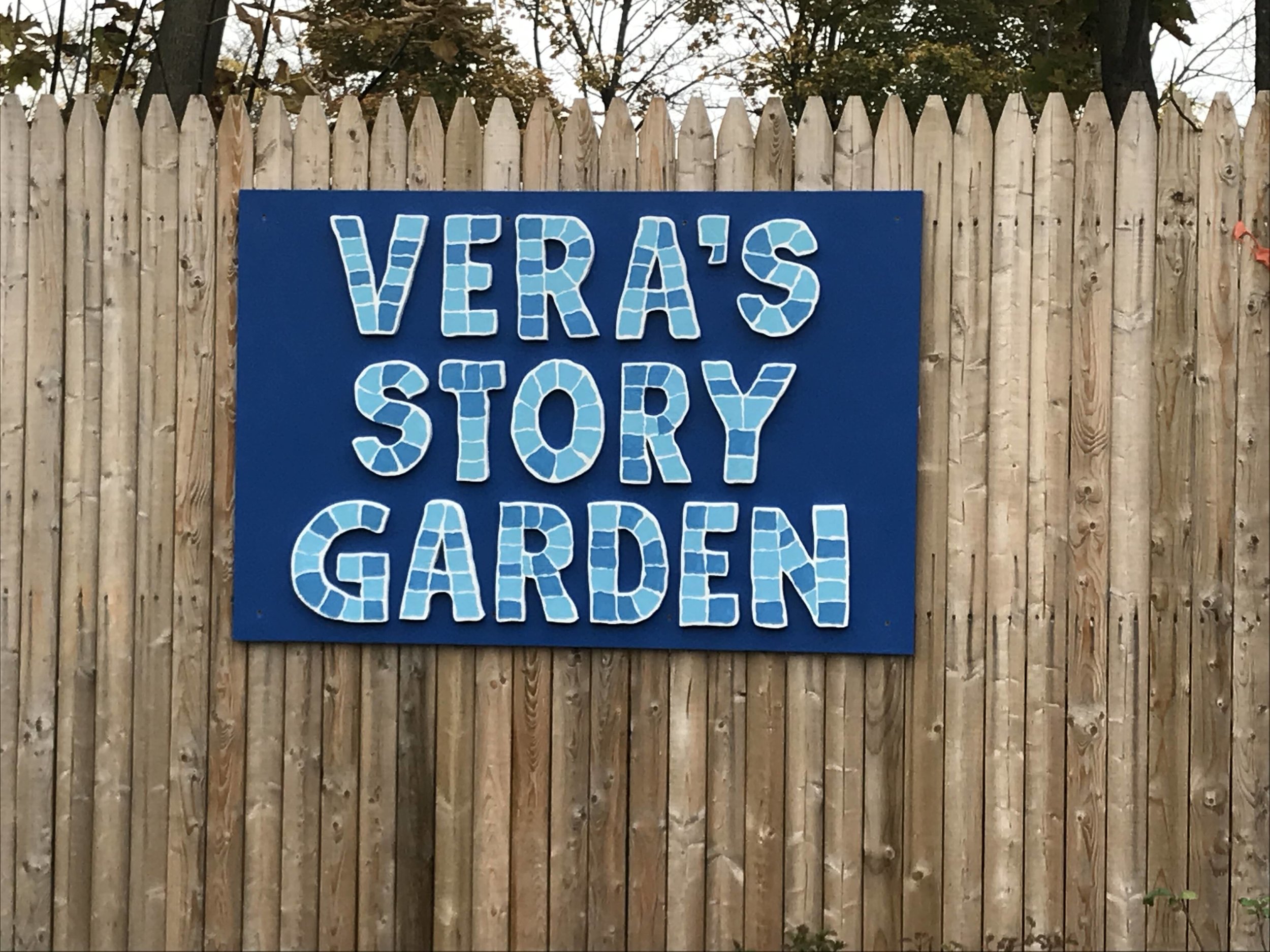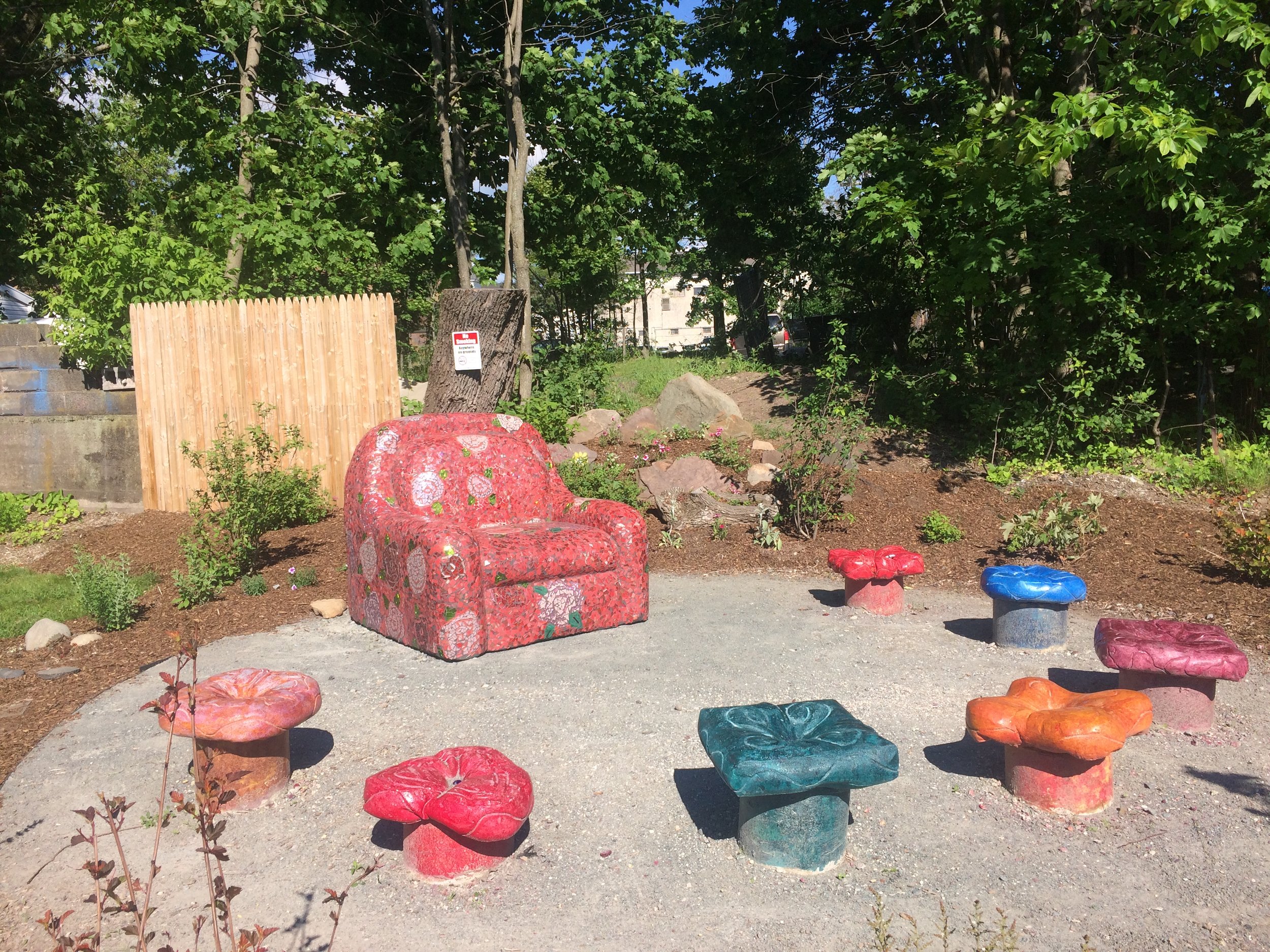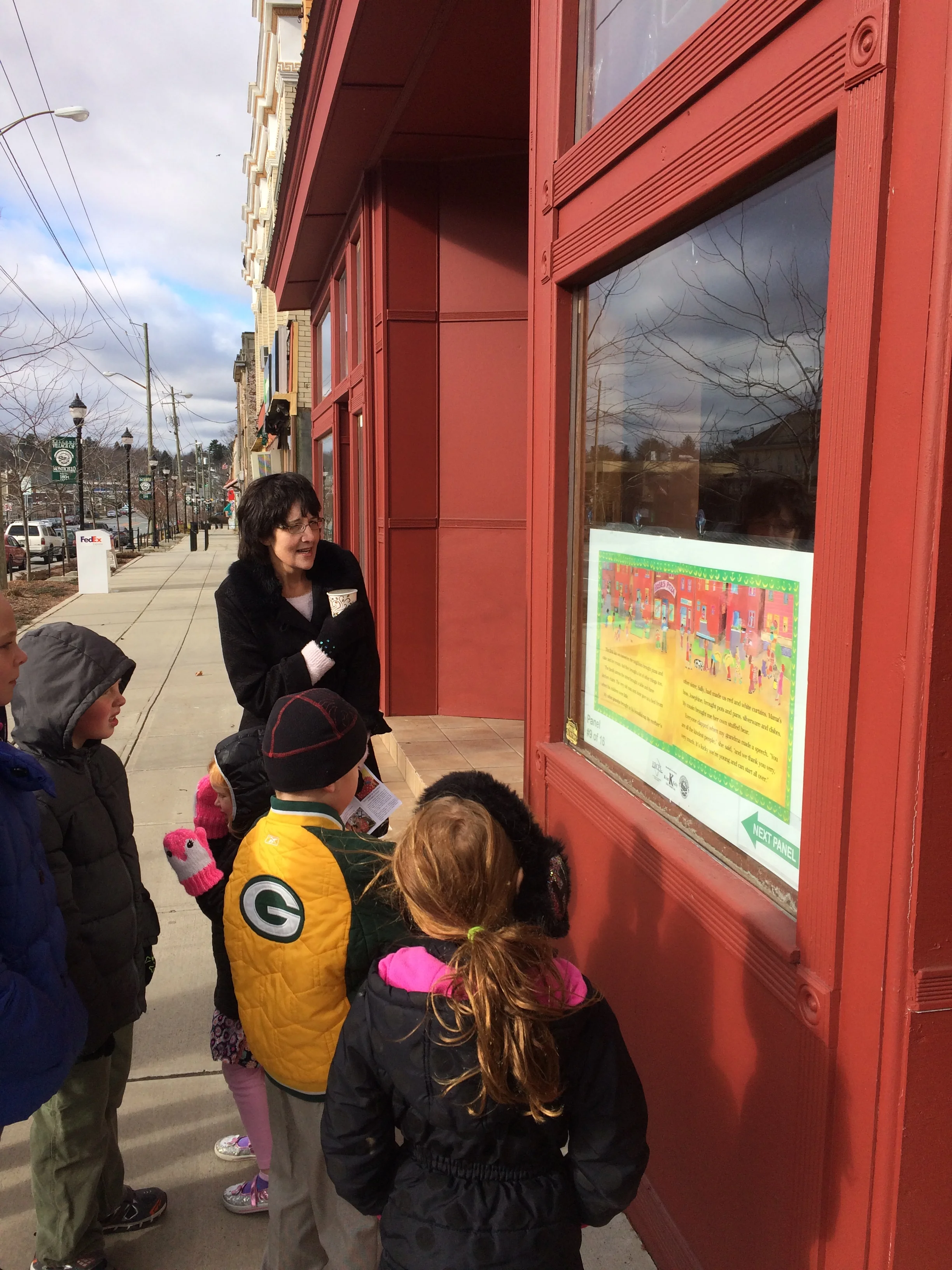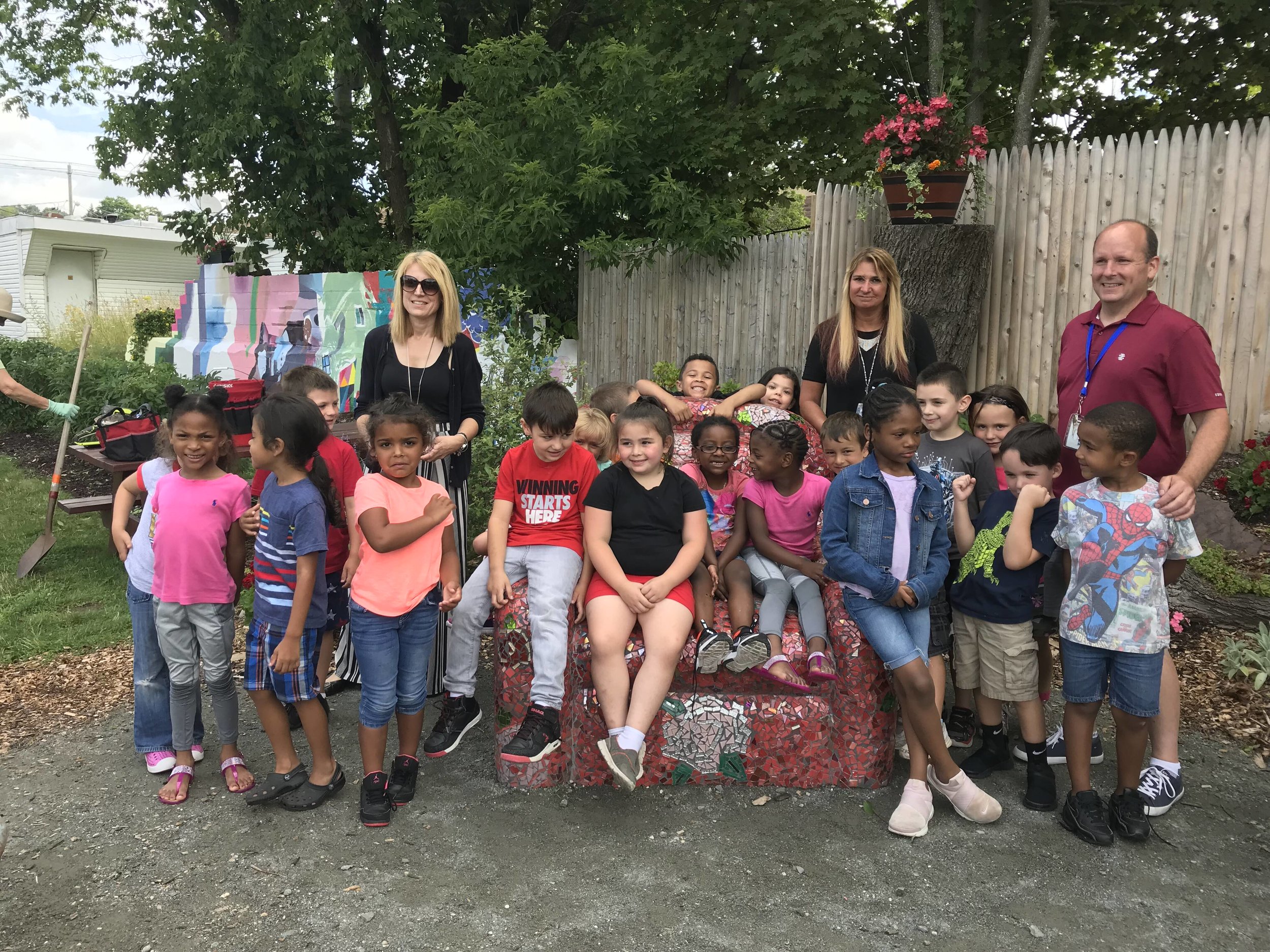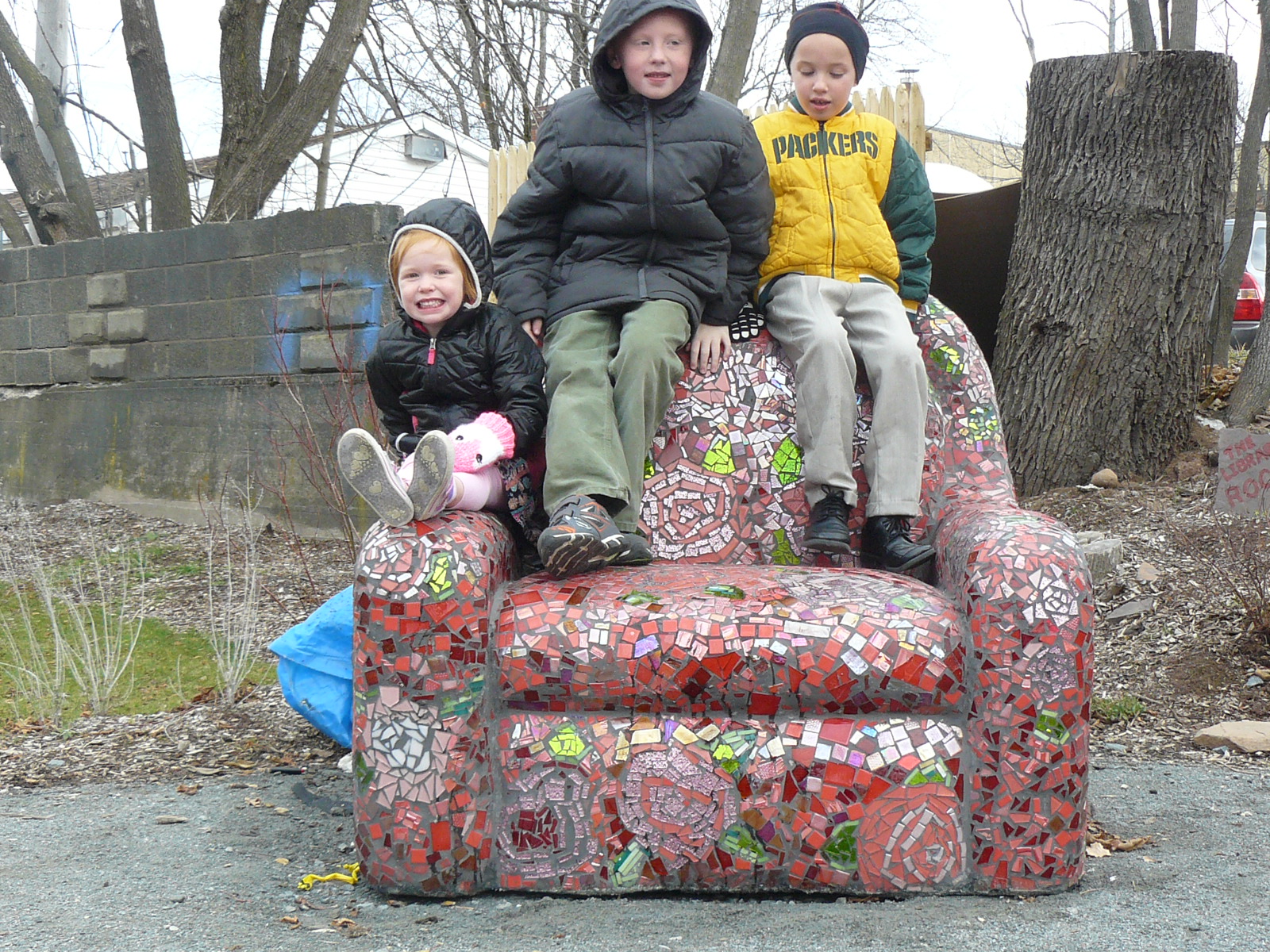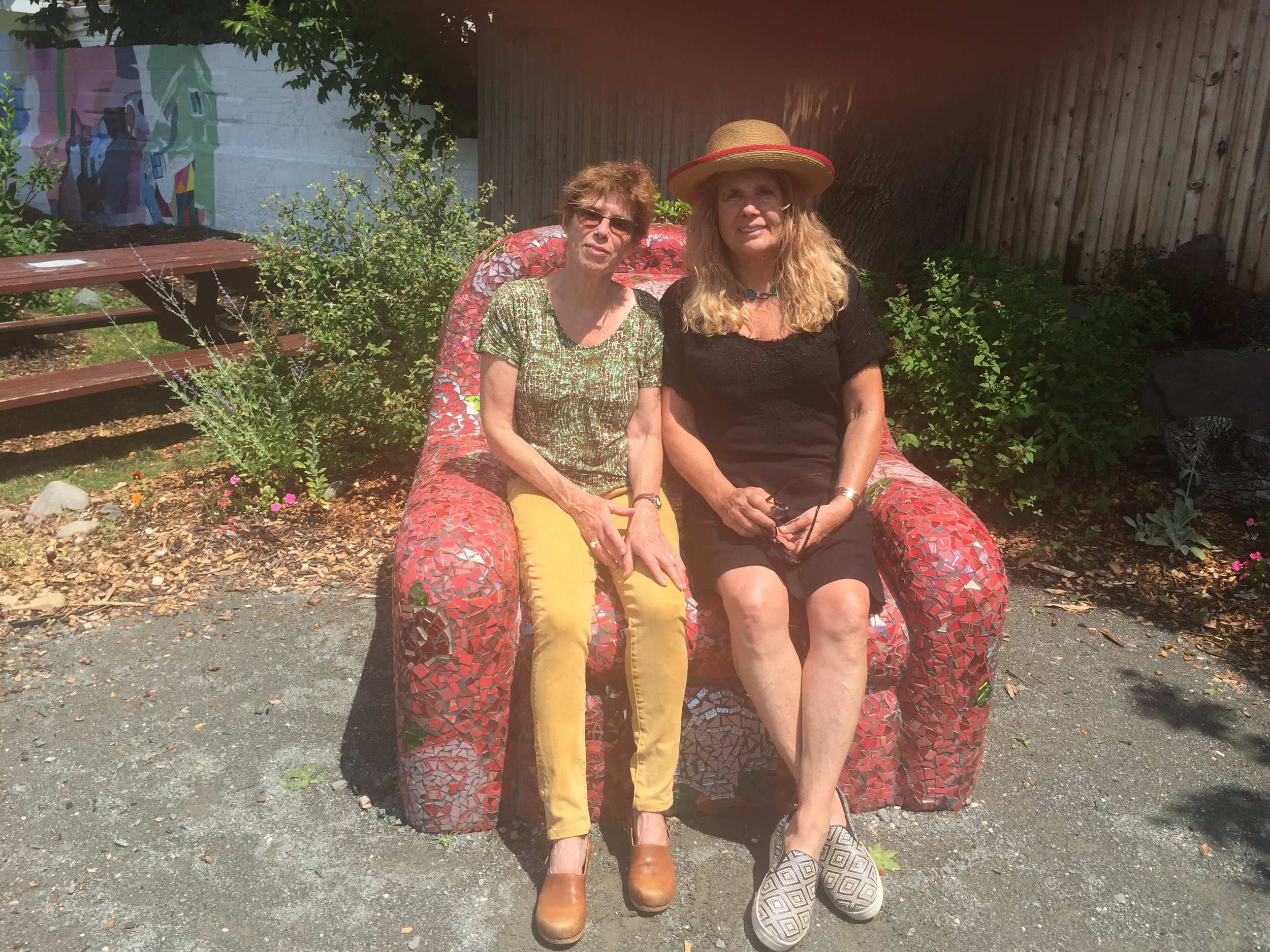Home > About Us > Vera B Williams Literary Landmark
Vera Baker Williams (1927-2015)
Vera Baker Williams was born January 28, 1927, in Hollywood, California, to parents, Albert Baker and Rebecca Porringer, who immigrated from Russia and Poland. During the Depression of the 1930s, Vera was sent with sister, Naomi, to a Jewish home in San Francisco for nearly a year. Later, her parents moved from California to the Bronx, in New York City, where Vera studied and discovered a love of the arts.
She had one of her paintings, “Yentas,” was shown at the Museum of Modern Art (MoMA) when she was only nine years old. The painting had been done in a program at Bronx House under the auspices of the Works Progress Administration. Accepting a prize for this work at MoMA, she spoke to First Lady Eleanor Roosevelt who had singled out her painting. On Saturdays, Williams also attended art class with Florence Cane, who had opened an art school; initially in Rockefeller Center and later at New York University. Vera’s work would later appear in Cane’s book first titled "The Growth of the Child Through Art", and later "The Artist in Each of Us," under the name "Linda."
After graduating from The High School of Music and Art, she attended Black Mountain College and studied with Josef Albers, a former Bauhaus artist who had created a number of murals, most notably the entrance to the Time & Life Building and the Corning Glass Building in NYC. At Black Mountain, Vera met Paul Williams whom she married.
Throughout her life, Ms. Williams always enjoyed the outdoors – including hiking, camping, planting and—later— canoeing. She even canoed 500 miles on the Yukon, a trip that inspired her book “Three Days on the River in a Red Canoe.” Her love of the outdoors and search for community, was fulfilled when she and Paul Williams created an artists’ community on a mountainside in New York State where Paul designed and built the houses along with those who lived there. An international community, The Gate Hill Cooperative, located in Haverstraw, New York (though ofter referred to as being in Stony Point), was started in 1955 and is still active today. It can be seen here on Google Maps. Vera and Paul’s children, Sarah, Jennifer and Merce grew up there and the family communed with other notable artists who lived at the Co-op, including John Cage, Sari Dienes, Karen Karnes, David Weinrib, David Tudor and M.C. Richards, Stan Vanderbeek and Lanoue Davenport.
While at the Coop, Williams helped to found the Collaberg School, after first becoming involved with Barker’s school, created by Bob Barker who had been influenced by Summerhill. In addition to taking on a leadership role, Vera taught art and social studies while Paul took on the shop class. The school provided a learning experience based upon the philosophy of the English “Summerhill School.” Like Summerhill, the Collaberg School was a place where students worked together with faculty to decide what they wanted to learn, to express their own ideas, and to have control over their learning. Reflecting Vera’s strongly held values, the school aimed to balance freedom with responsibility and to graduate students with a lifelong curiosity and love of learning.
After parting from Paul Williams in the summer of 1970, Ms. Williams moved to Canada to teach at Everdale, a residential, alternative school in the Ontario countryside outside of Toronto. She cooked and taught there until 1973, after which she made her way to Vancouver, British Columbia where she lived on a houseboat, and devoted herself to her own work of writing, painting and drawing.
It was during this trip to Canada’s western coast that she illustrated her first book, “Hooray for Me!” (1975). Three years later she authored her first book, “It’s a Gingerbread House: Bake It, Build It, Eat It!”, published in 1978. She would use many of her life experiences to create books like “Stringbean’s Trip to the Shining Sea”, written by Vera and co-illustrated with daughter Jenny. “A Chair For My Mother”, which was awarded the prestigious Caldecott Honor, is the most famous of the more than a dozen books she wrote and illustrated.
Ms. Williams believed passionately in the rights of women and children and engaged in much non-violent activism to promote these rights. She loved and felt close to children all over the world, as expressed in her beloved childrens’ books and her activities to keep children healthy, happy and safe from violence, war and nuclear disasters. Her activities on this front included participating in a peaceful women's protest in 1981 in front of the Pentagon which landed her a month’s stay in Alderson Federal Penitentiary in West Virginia. In 1984 Ms. Williams took on the role of executive committee member of the War Resisters League from 1984 -1987 and also illustrated a number of the yearly calendars issued by that organization.
Williams’ daughter, Jennifer, raised her children in Glen Spey, in upstate New York and this originally drew Ms. Williams to pursue a life in Sullivan County. As she had always enjoyed country life, she decided to find a home near her daughter and grandchildren. After renting in various towns and making many good friends in the area, eventually she purchased a home in Narrowsburg, on the banks of the Delaware River. Here, she could engage in the activities she loved: swimming and wading, and sitting on the rocks for hours. She also enjoyed hiking, picking blueberries and fiddleheads, and foraging for mushrooms in the woods near her home.
In 2011, the Ethelbert B. Crawford Library hosted a benefit chair auction as part of the 75th anniversary of the library. Williams was kind enough to paint a chair to be sold for the event. Below are pictures of the chair she completed for the auction.
The chair is presently displayed in the Minisink Middle School library in Orange County, New York where the children can continue to enjoy the artwork of Williams.
Her final work, Home at Last, was completed at her home in Narrowsburg just before she passed away at the age of 88.
Ethelbert B. Crawford Library honored Williams with the unveiling of “Vera’s Story Garden” and a community Story Walk with her book A Chair for My Mother in December 2016.
The Library is honoring Williams by becoming a Literary Landmark - becoming one of a very select few sites to bear that honor.
Literary Works & Awards:
As Author
· It's a Gingerbread House (1978)
· The Great Watermelon Birthday (1980)
· Three Days on a River in a Red Canoe (1981)
· A Chair for My Mother (1982)
· Something Special for Me (1983)
· Music, Music for Everyone (1984)
· “My Mother, Leah and George Sand" (1986) An Essay in The Tribe of Dina
· Cherries and Cherry Pits (1986)
· Stringbean's Trip to the Shining Sea with Jennifer Williams (1988)
· "More More More" Said the Baby (1990)
· Scooter (1993)
· Lucky Song (1997)
· Amber Was Brave, Essie Was Smart (2001)
· A Chair for Always (2009)
· Home at Last with Chris Raschka (2016)
As Illustrator
· Hooray For Me!, Remy Charlip (1975)
· Long Walks and Intimate Talks, Grace Paley (1991)
· Home: A Collaboration of Thirty Authors & Illustrators (1996)
Awards
· 1983: Boston Globe–Horn Book Award, Picture Book category, A Chair for My Mother
· 1983: Caldecott Medal Honor Book, A Chair for My Mother
· 1985: Jane Addams Children's Book Award Honor Book, Music, Music for Everyone
· 1991: Caldecott Honor, "More More More" Said the Baby
· 1994: Boston Globe–Horn Book Award, Fiction category, Scooter
· 1995: Library of Congress exhibition, "Family, Friends, and Community: The Art of Vera B. Williams"
· 1998: Charlotte Zolotow Award, Lucky Song
· 2002: Jane Addams Honor, Amber Was Brave, Essie Was Smart
· 2008: Regina Medal of the Catholic Library Association; body of work
· 2009: NSK Neustadt Prize for Children's Literature
Other sites about Vera Williams:
